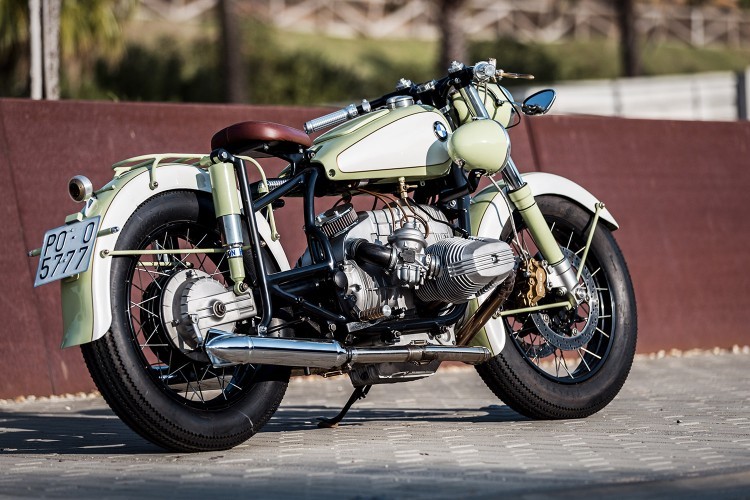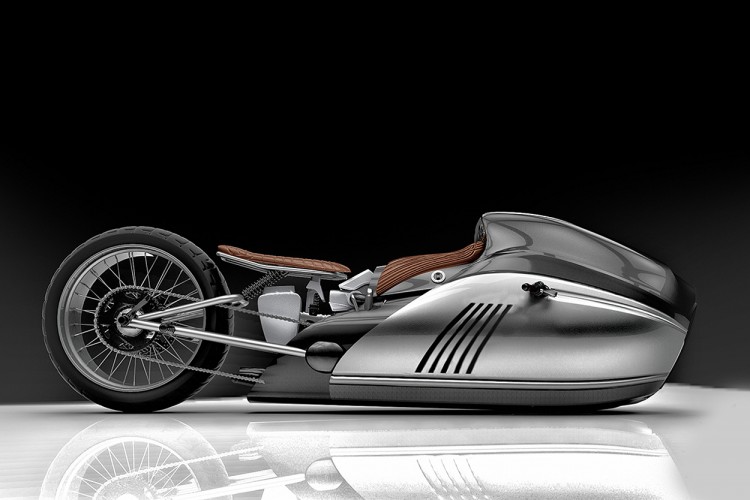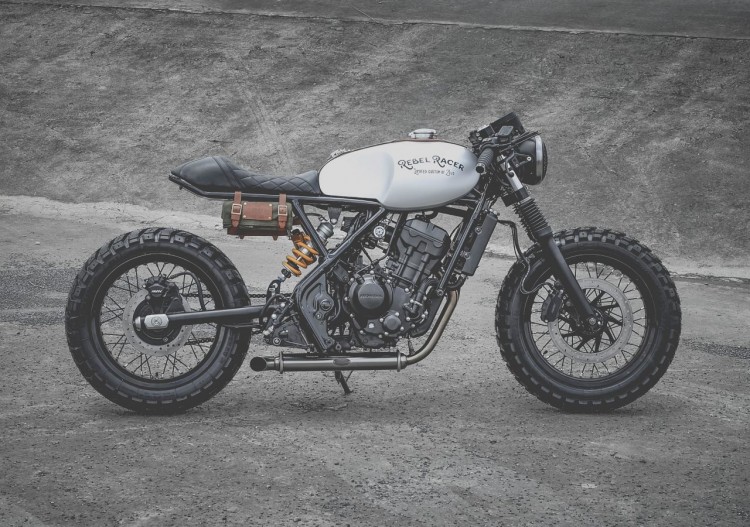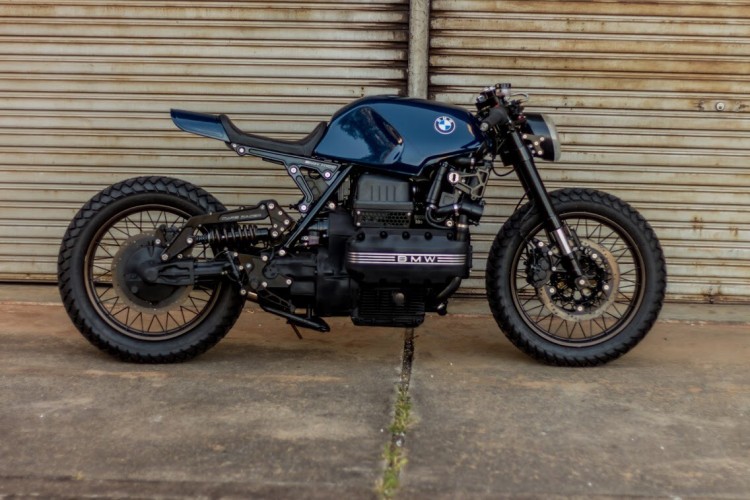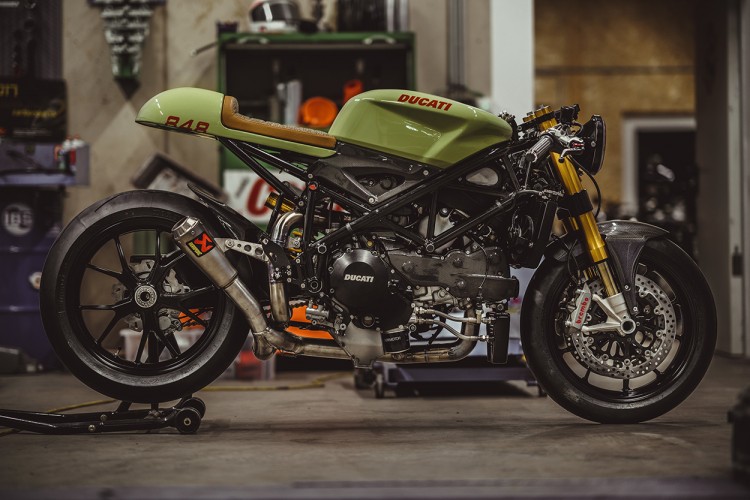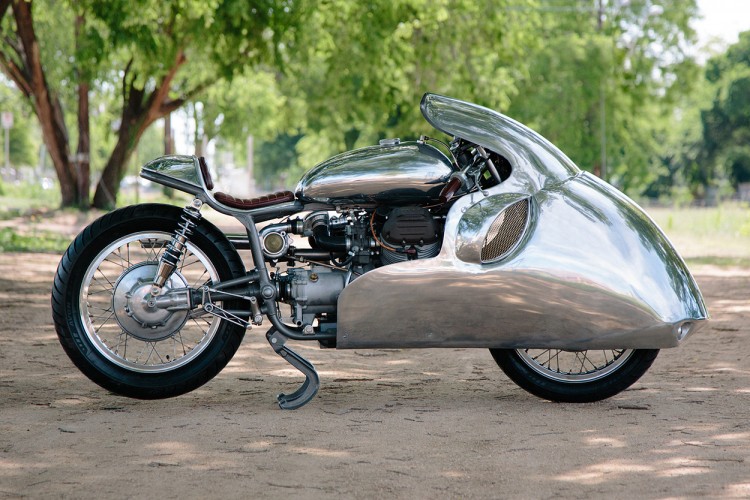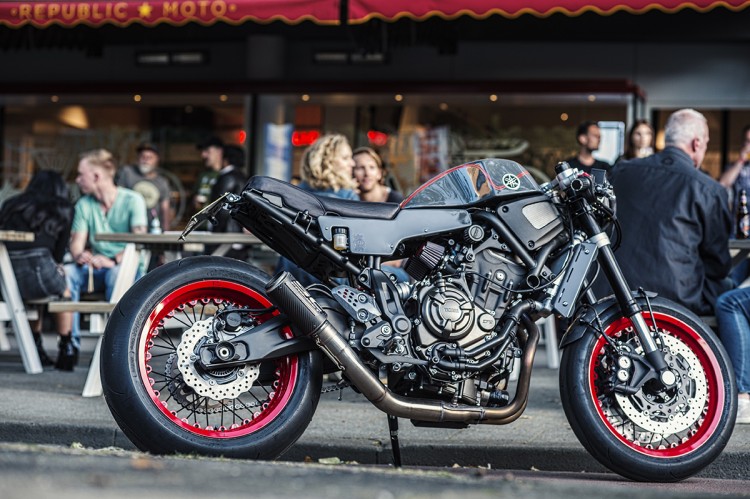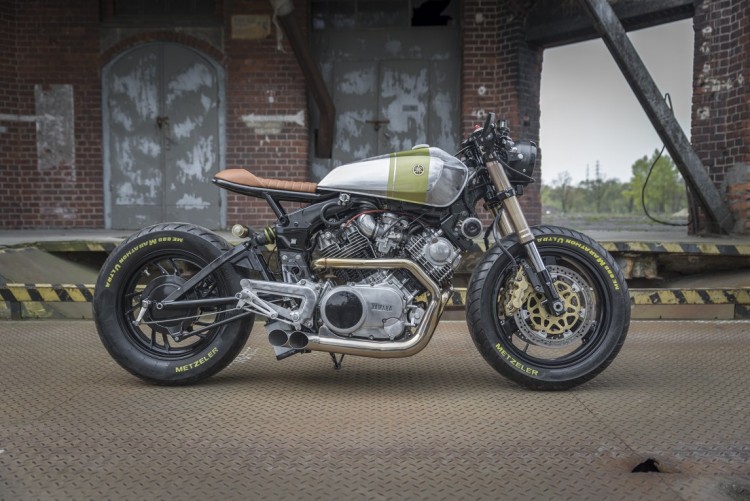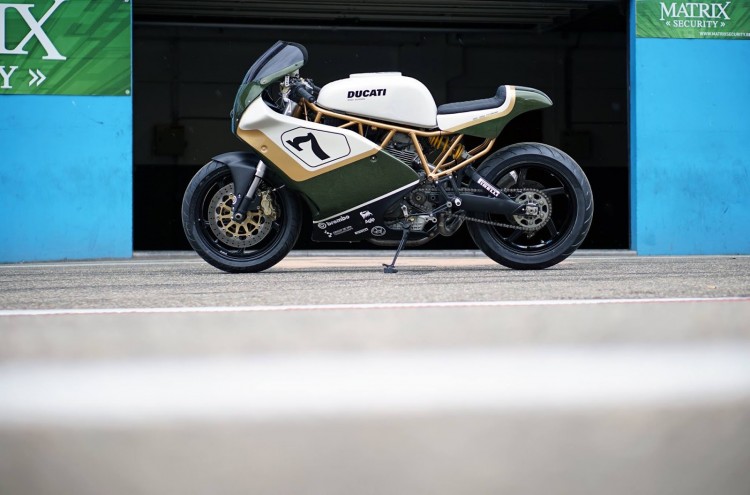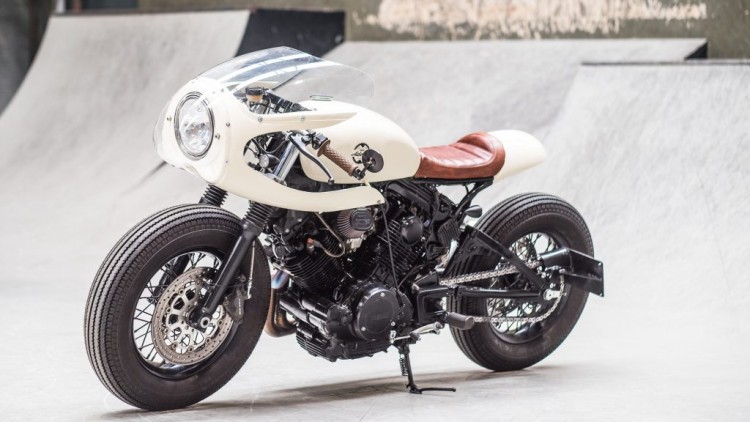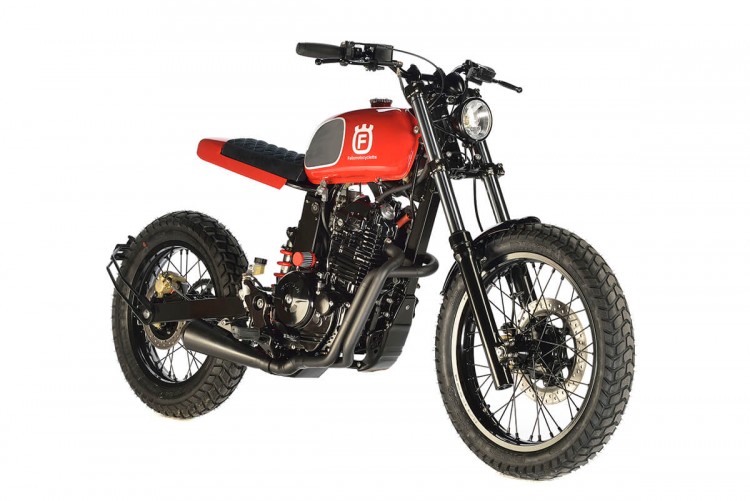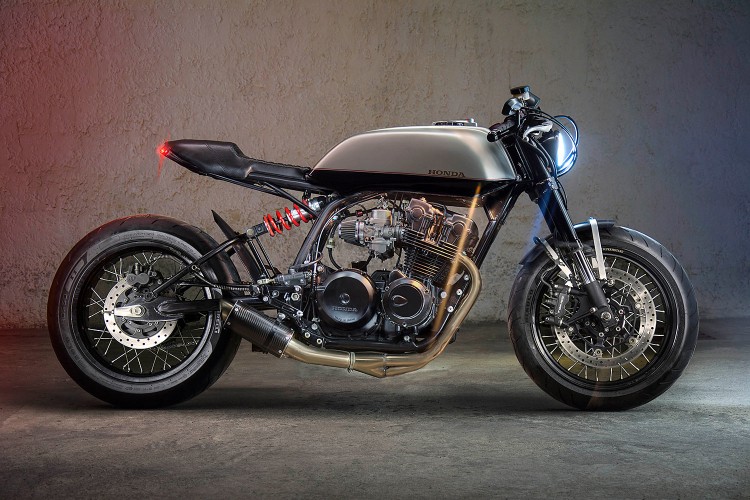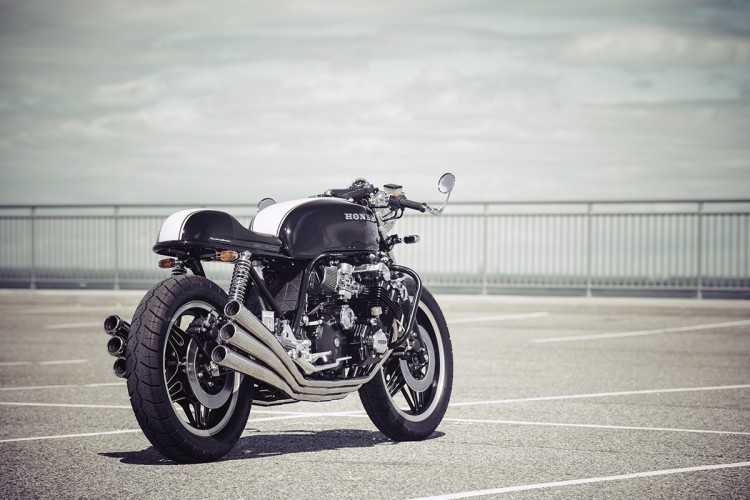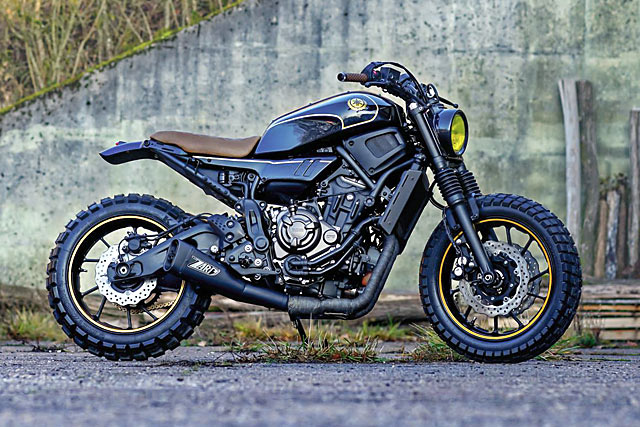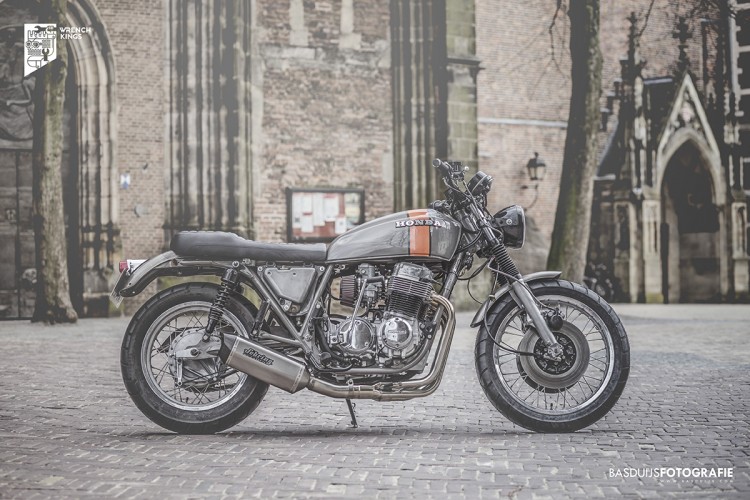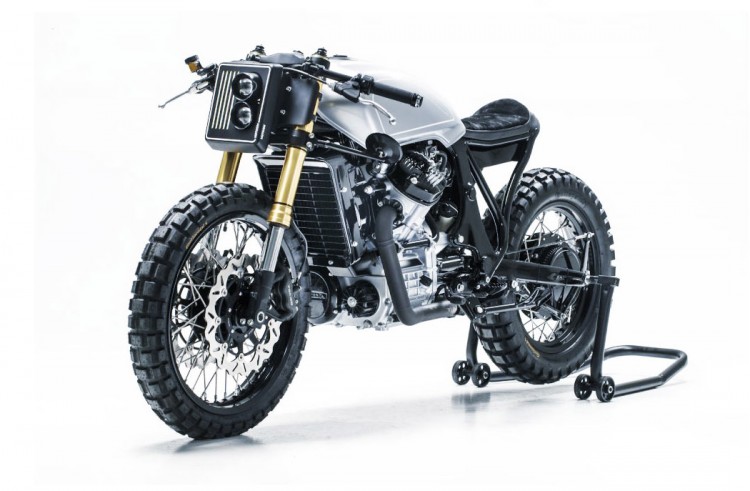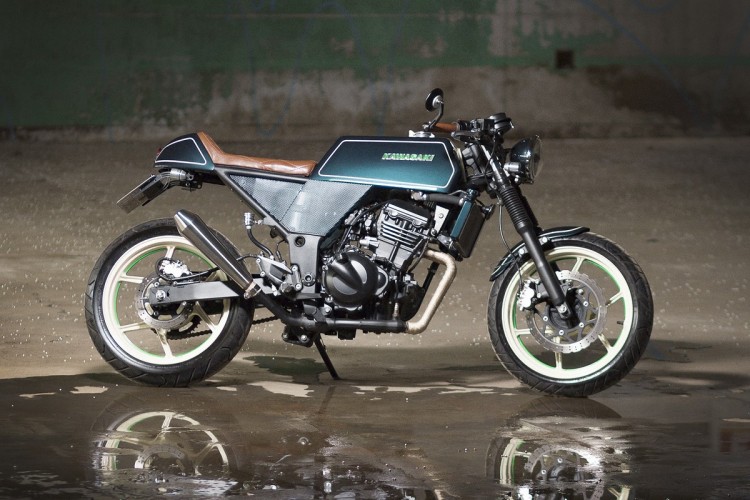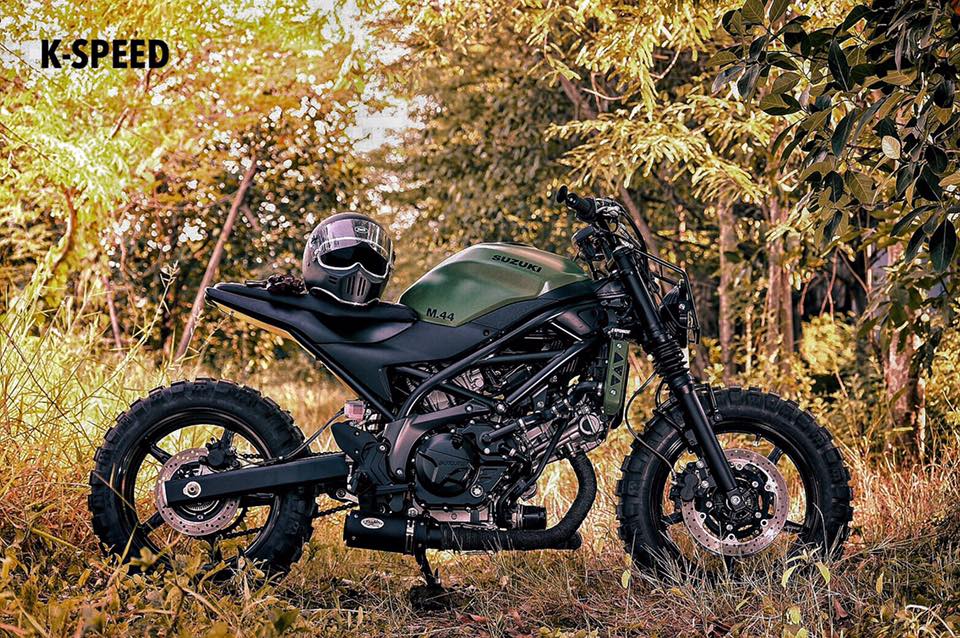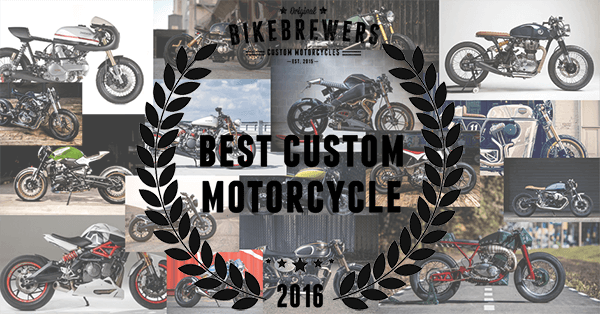The post Aprilia 250RS Cafe Racer by Cedric Cevennes appeared first on BikeBrewers.com.
]]>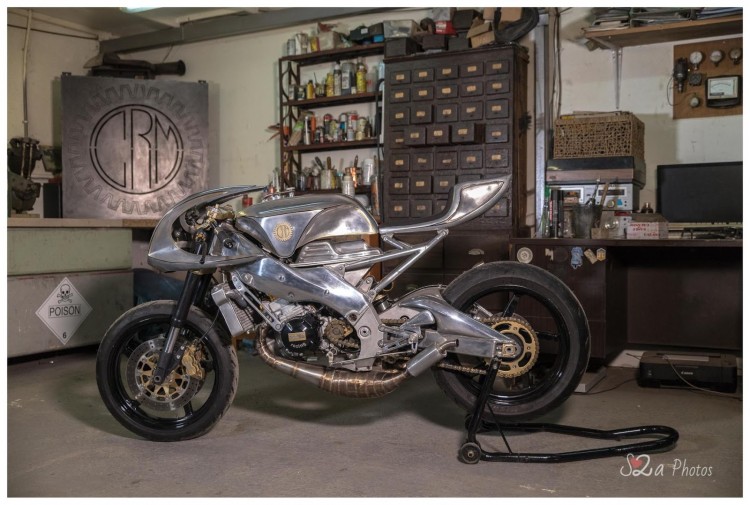
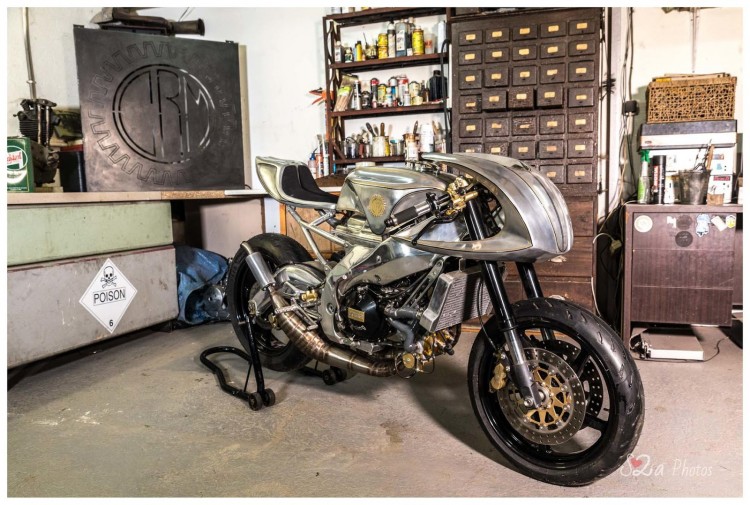
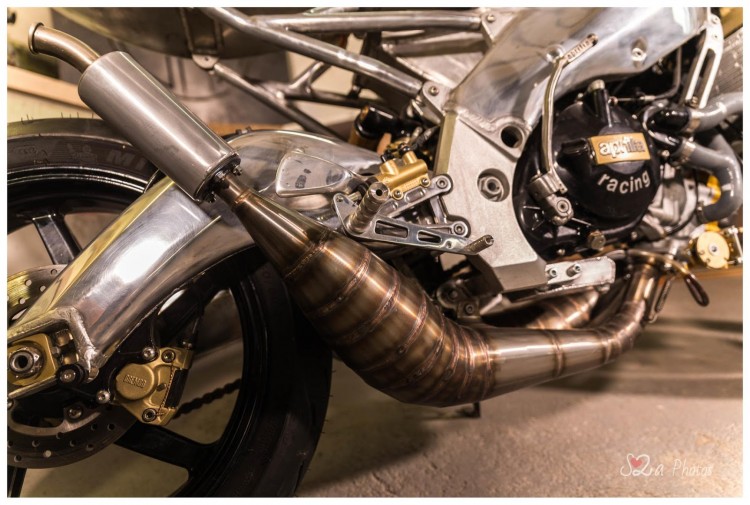
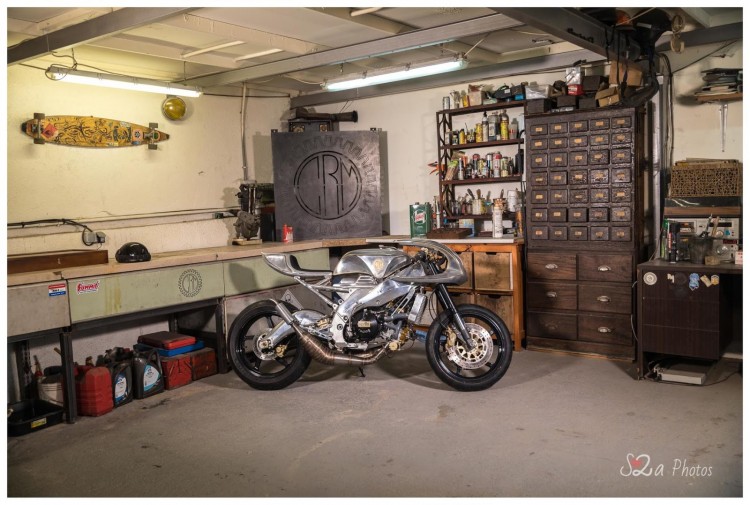
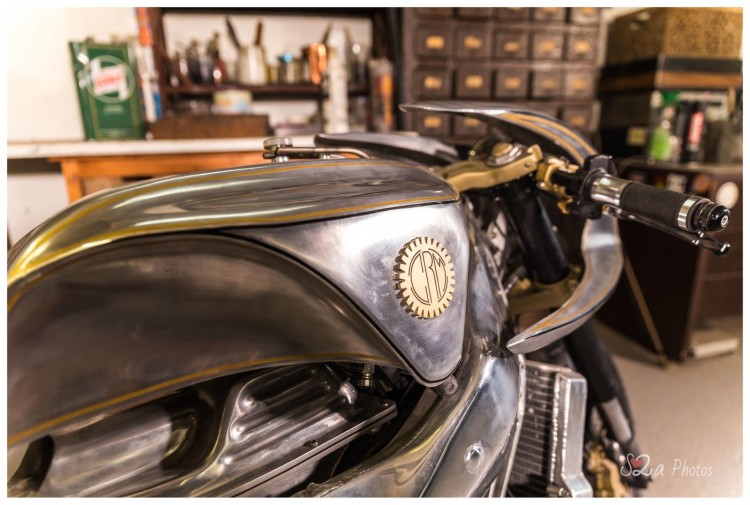
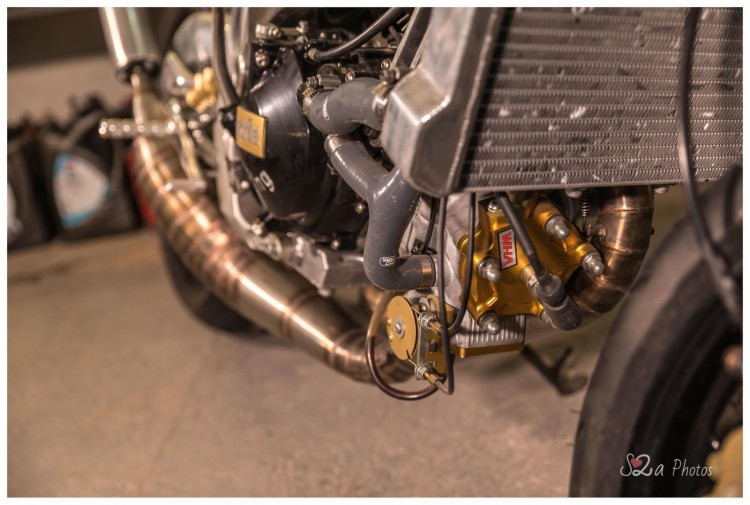
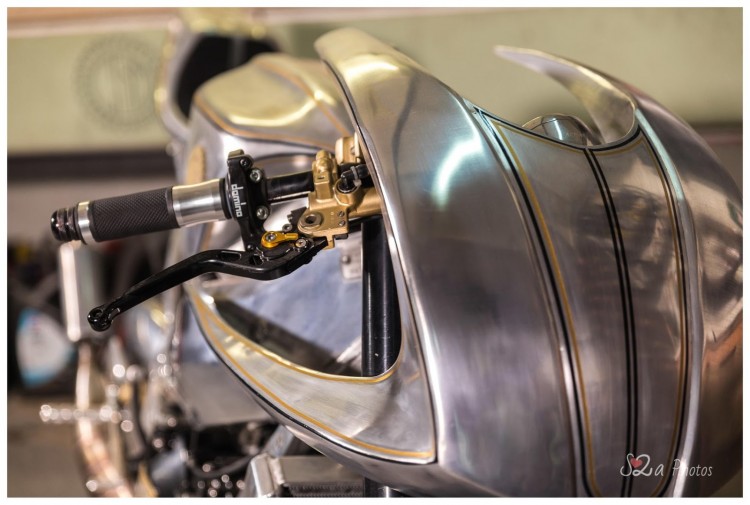
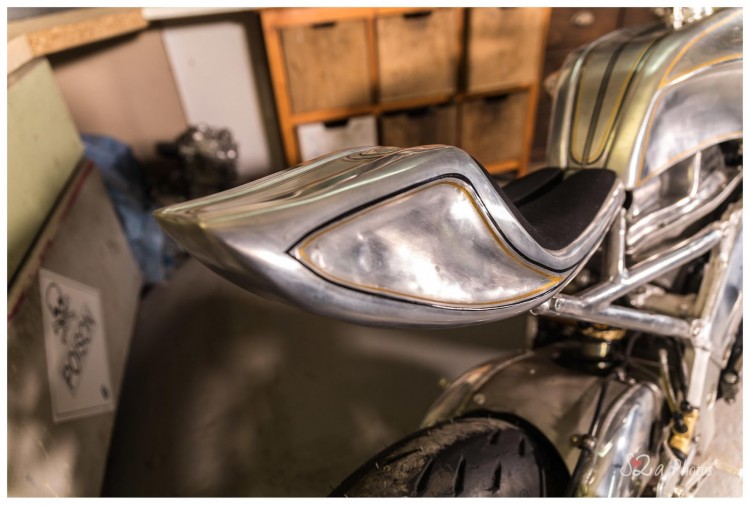
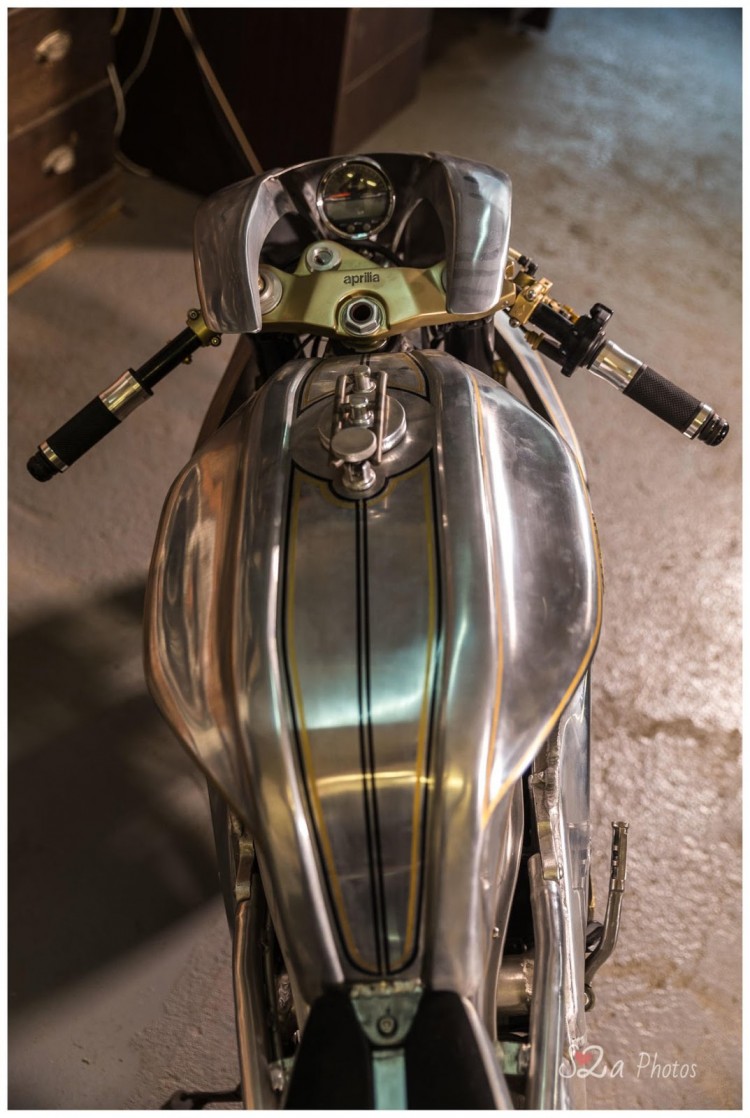
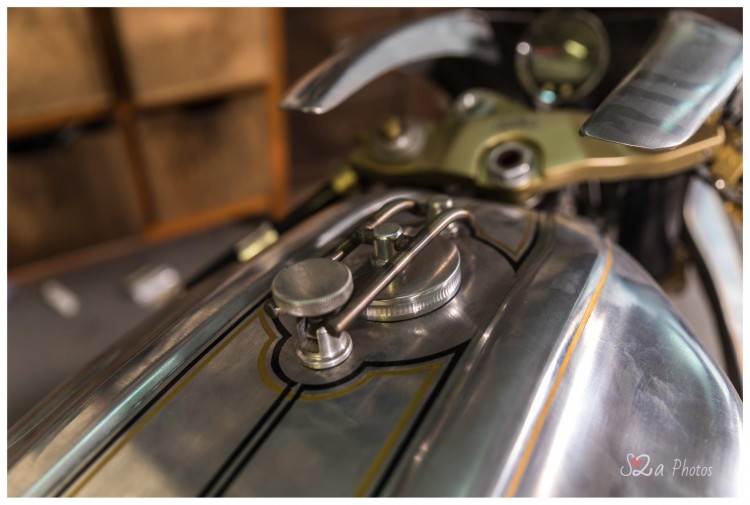
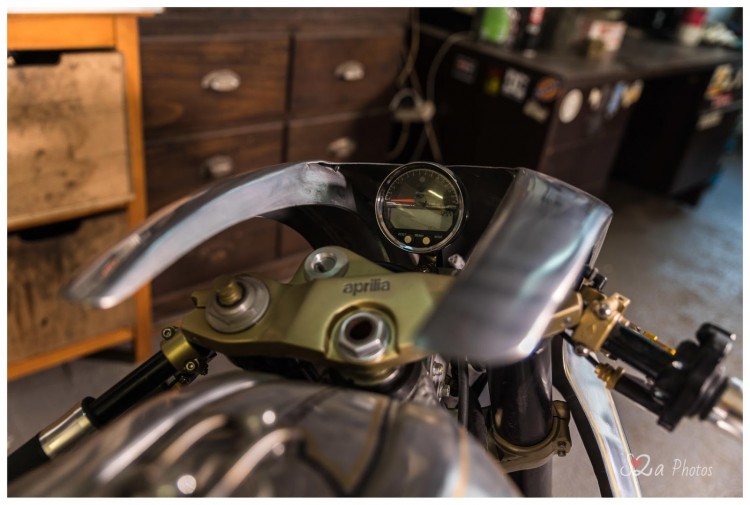
The post Aprilia 250RS Cafe Racer by Cedric Cevennes appeared first on BikeBrewers.com.
]]>The post Hodaka Ace Scrambler by Chris Tope appeared first on BikeBrewers.com.
]]>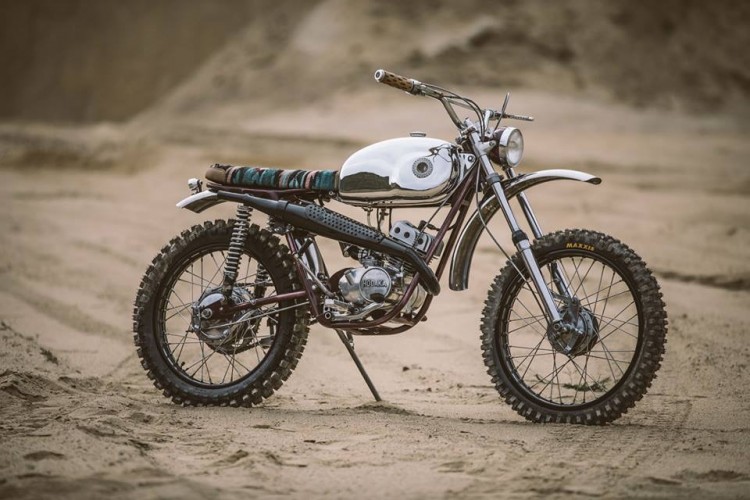 About a year ago we got a very cool bike in our inbox built by Chris Tope; a laidback bratstyle based on a Honda CB200 twin. This cool little machine made it to our Top 10 Shed Builds of 2017. It was no surprise that Chris continued with his new passion and today he surprised us again with a pretty rare build. Ever heard of Hodaka motorcycles? I didn’t before I got this submission by Chris Tope. Words by Chris:
About a year ago we got a very cool bike in our inbox built by Chris Tope; a laidback bratstyle based on a Honda CB200 twin. This cool little machine made it to our Top 10 Shed Builds of 2017. It was no surprise that Chris continued with his new passion and today he surprised us again with a pretty rare build. Ever heard of Hodaka motorcycles? I didn’t before I got this submission by Chris Tope. Words by Chris:
The story begins when I was at Rice-o-Roma Swap Meet and found a gentleman selling a chrome gas tank. I thought this would be a cool lamp project so I bartered with him and got it for 20 dollars. Then as I got home I started doing a little research on the manufacturer of the tank, Hodaka. Seems that this was a tank from a Super Rat. That’s when I decided to look at the ol’ interweb and found someone selling a 1967 Hodaka Ace 100 that was all together but without a tank. Perfect, so I placed a low bid and the next day I won, for a whopping 120 dollars! This was the beginning of the ‘Navajo’daka’.
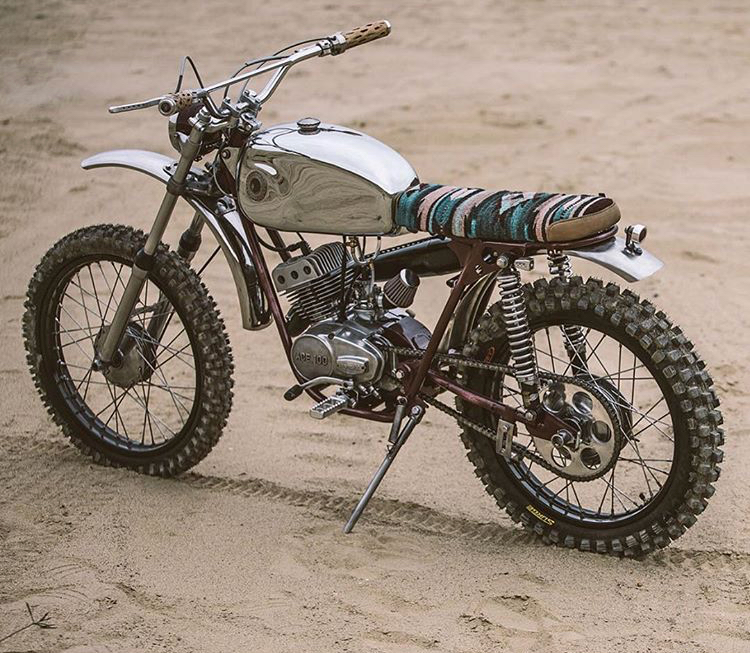
Going into the build the concept was a lamp… haha, but after buying the bike on a whim to go with the tank, my mind started thinking of ideas. I grew up in a house with parents that loved Native American culture. We had art and paintings all over my house which had inspired some of my sketchings in my journal of an Indian chief, feathers, a dream catcher, and a Teepee. When thinking of ideas for the build, I had flipped through my sketchbook one day and thought, this was it, I was somehow going to incorporate this into my Hodaka build. And so began the designing of the ‘Navajo’, with elements of fire, air, water and earth (such as the turquoise inlay).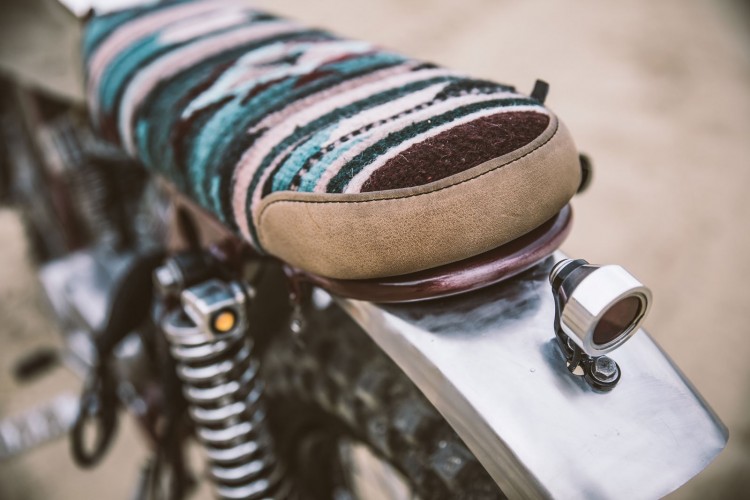
I knew I needed a really unique feature to the bike that paid homage to Native American culture, so I found an artist that hand engraved an 1882 Morgan coin and two 1937 Buffalo nickels (also called hobo coins, interesting history behind those) with a skull in full native headdress along with petroglyphs. I wanted the chrome tank and vintage Native American saddle blanket seat to attract people from afar and pull them in closer to discover the small, intricate details such as the hidden gold Hodaka symbol among the petroglyphs in the coin and the dream catcher hanging under the seat, a gift from my mom. Also, reading about the history of Hodaka and how unique they were with their nomenclature (Combat Wombat, Dirt Squirt, Road Toad, Super Rat), I knew I wanted to do a desert Native American inspired build (hence the beefed up tires and chola cactus grips).
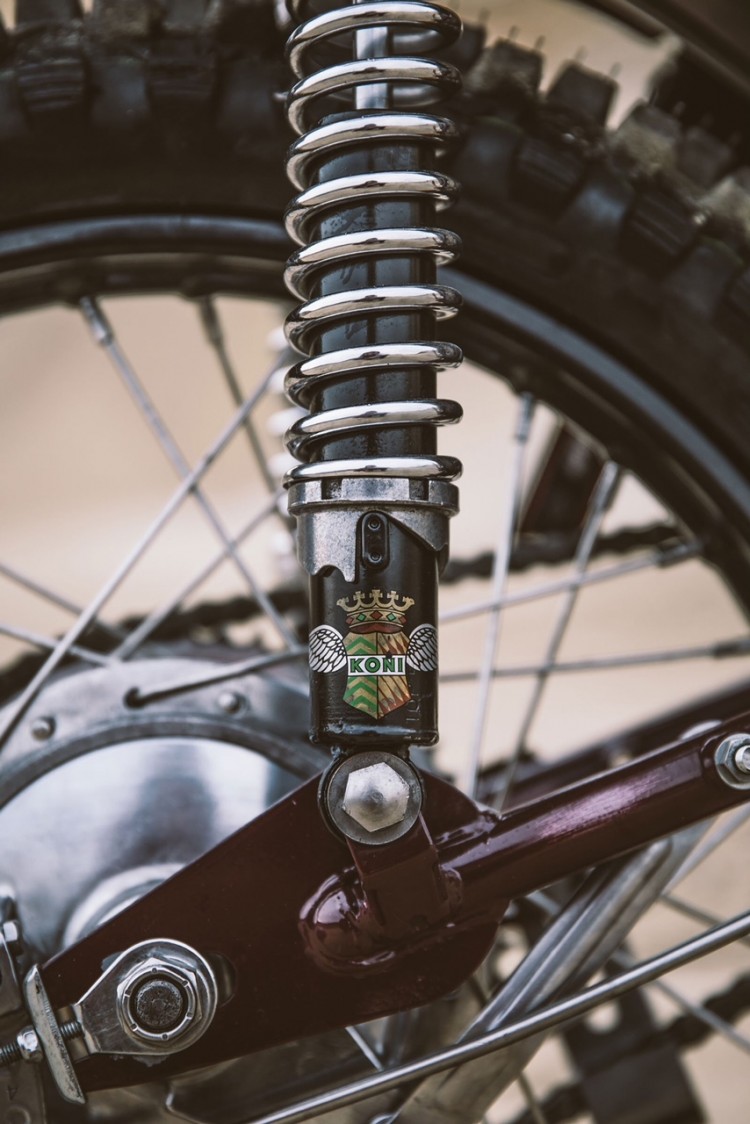
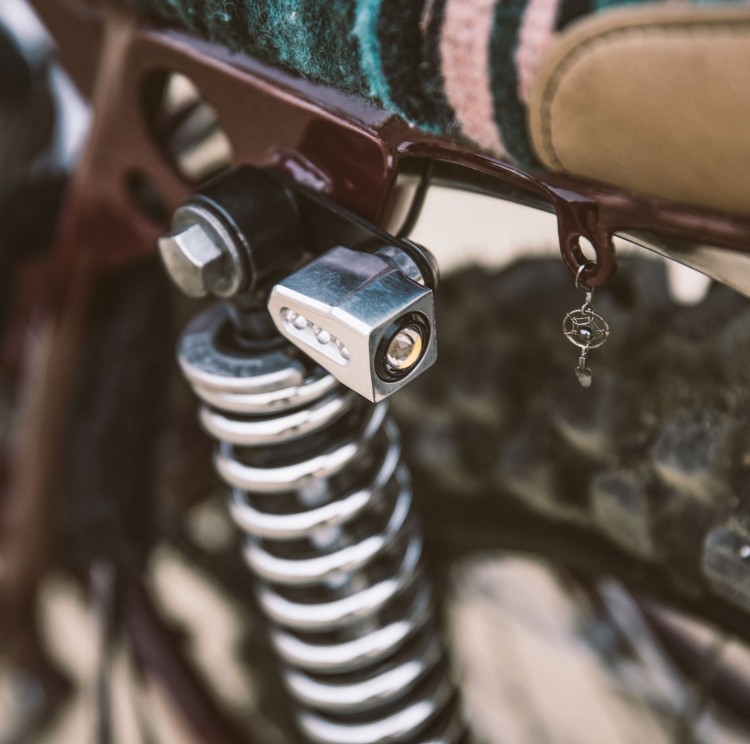
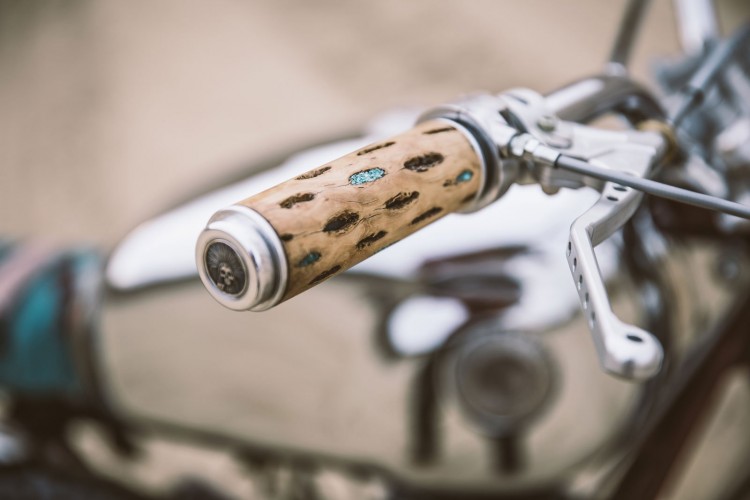
Trying to find Hodaka parts is like trying to find a needle in a haystack, especially the vintage custom parts. For the majority of the general parts, I found a couple of good sources around the country who had these in stock. For the parts I had from the bike, it took elbow grease and long hours to get them salvageable.
Before the project, honestly, I had never heard about Hodaka’s which is funny because they were stout bikes back in the day after doing some research. You had always heard about the vintage TT and track bikes like Bultaco, Husqvarna, and Penton, but Hodaka never came up in conversation. After the project and doing so much research, I definitely have a love for Hodaka’s. They are fun bikes with pretty simple motors to work on and not all the bells and whistles that make working on a bike frustrating. I’m sure later down the road there might be a Dirt Squirt or a Combat Wombat that might need to be customized and stored in my garage.
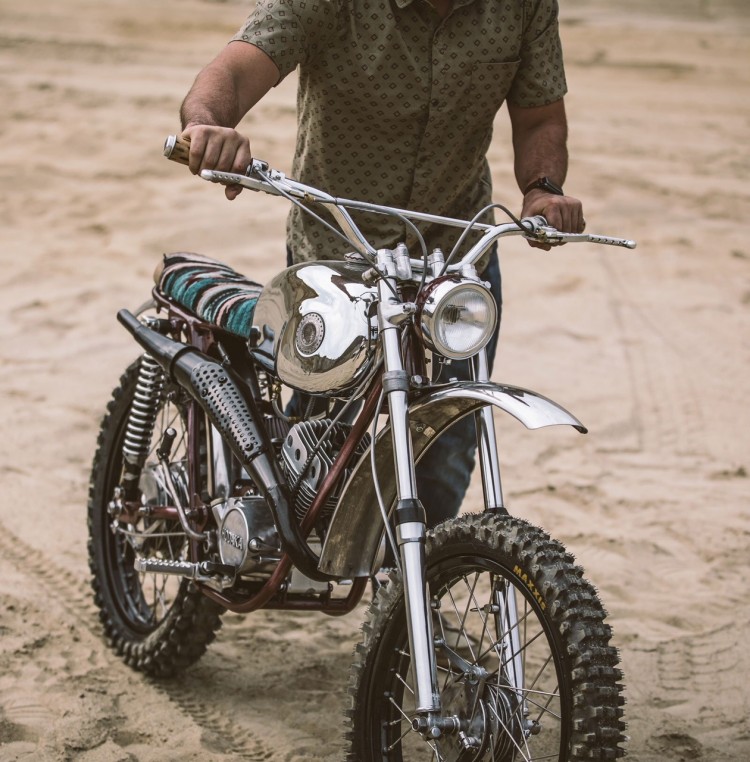
As a builder, I don’t think we feel like we are ever fully finished with a build. Heck I’ll admit, I’m a perfectionist, so any little piece that was not perfectly polished would bother me on end, but overall, I am very pleased with the results. I didn’t think a sketch on a notebook or a tank purchased at a swap meet would turn into one of my favorite builds to date.
As for doing anything differently, I would probably not try to build this bike or another in my fifth wheel toy hauler. Not a lot of people know that my bike builds are done in a 10′ by 12′ section of a trailer that I travel the country in for my ‘real’ job as a biologist. The limited workspace wore me out, but luckily this year, we had nice weather in New England so I could do a lot of the work outside.
Follow Chris: @utopeia_moto_company
Hodaka Scrambler Mods List:
- Base model: 1967 Hodaka Ace 100 B+
- Engine size: 98 cc Piston-port 2 Stroke Bored to a 125cc, and the Head/Jug ported by Joey Cole
- Carburetor: Mikuni 28mm
- Air Filter: Modified K&N Cone
- Transmission: OEM, 5-speed wet multi-plate
- Exhaust: OEM, Ceramic Powdercoated
- Fuel Tank: OEM, re-chromed tank with custom 1882 Hobo Morgan coin emblems by J.H Ranger, CNC coin bezel by Joey Cole
- Gas Cap: Custom Titanium CNC by Joey Cole
- Frame: Fabricated/Modified, stretched 3″ longer and filled-in all weld seams
- Frame Paint: Distressed Maroon Finish by Bill Lebeau
- Wheels: OEM, 19″ Front, 18″ Rear Powdercoated Black with new Buchanan spokes
- Tires: Maxxis Maxxcross IT (Front) Maxxis Surge (Rear)
- Front fork: Ceriani 30mm
- Shocks: Koni
- Front Brake: OEM
- Rear Brake: OEM
- Rear Sprocket: Modified CNC, Joey Cole
- Handlebars: Emgo Chrome 7/8
- Handgrips: Cholla Cactus Wood inlaid with Turquoise by Greg Madrigal with Mark Atkinson’s CNC sleeves, CNC bar ends inlaid with 1937 Hobo Buffalo Nickel engraved by J.H Ranger
- Handcontrol: Joker Machine
- Headlight Ears: Ceriani
- Headlight: Vintage CEV Headlight
- Taillight: Prism Motorcycle Supply
- Footpegs: Joker Machine
- Blinkers: Joker Machine
- Seat: Fabricated seat pan by Counterbalance Cycles.
- Upholstery: Vintage Native Saddleblanket material, stitched up by Counterbalance Cycles
- All Powdercoat by: Greg Shappy
- Painter: Bill Lebeau
The post Hodaka Ace Scrambler by Chris Tope appeared first on BikeBrewers.com.
]]>The post 21 Best Custom Motorcycles of 2017 appeared first on BikeBrewers.com.
]]>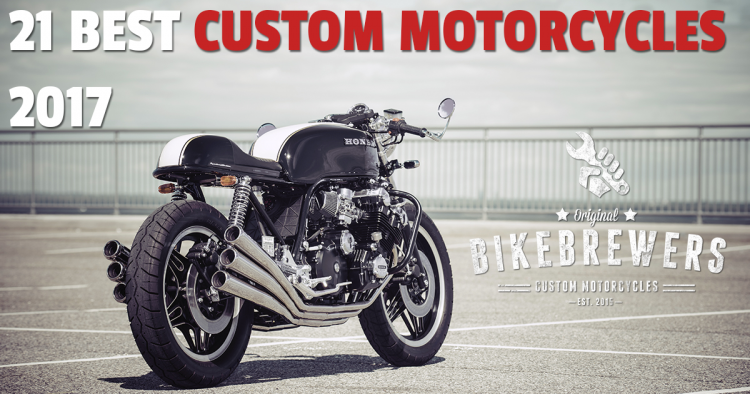 Yes! You’re right! Better late than never! This is the list of the 21 best custom motorcycles of 2017! Last year we did a voting based on the stats of popular bikes that year but this time we kept things much simpler. So no hard data, voting system, social statistics, or fancy algorithms; just a 100% subjective list from me and my buddy Ron Betist. Unlike other years (2015, 2016), we’ve made a list of 21 instead of 10 bikes. Just because we can (and 2017 was a great year for custom bikes!). Don’t hate us for this, if you have any comments or suggestions, do your thing below! Check out the list here, for more info pictures and info about the bike, just click on the [more info] link.
Yes! You’re right! Better late than never! This is the list of the 21 best custom motorcycles of 2017! Last year we did a voting based on the stats of popular bikes that year but this time we kept things much simpler. So no hard data, voting system, social statistics, or fancy algorithms; just a 100% subjective list from me and my buddy Ron Betist. Unlike other years (2015, 2016), we’ve made a list of 21 instead of 10 bikes. Just because we can (and 2017 was a great year for custom bikes!). Don’t hate us for this, if you have any comments or suggestions, do your thing below! Check out the list here, for more info pictures and info about the bike, just click on the [more info] link.
Oh, and we didn’t number them from 1 to 21, this was totally impossible for us and kept us arguing. And next to that: we didn’t want to place one custom bike above the other. So if you don’t mind: find the best one for yourself!
BMW R168 by Kacerwagen
BMW “Alpha” by Mark Atkinson and Mehmet Doruk Erdem.
Honda Rebel 300 by Zeus Custom
BMW K100 by Retrorides
Ducati 848 Evo Racer by NCT
Moto Guzzi “Dustbin” by Craigh Rodsmith
Yamaha XSR700 by Ironwood
Yamaha XV920 by Ugly Motors
Ducati 900SS by Deep Creek
Yamaha TR1 by Moto Adonis
Honda CR500 by C’s Garage
“Fusqvarna” FX650 by Le Garage Felix
Honda CB750 by Ace Custom Shop
Moto Guzzi 950 by Stile Italiano
Honda CBX1000 by Michael Kopec
Yamaha XSR700 by Motomax Metz
Honda CB750 by Wrench Kings
Yamaha DT125 Scrambler by Ranger Korat
Honda GL500 Silverwing by Motoism
Yamaha WR400 by Meccanica Serrao d’Aquino
Kawasaki Ninja 250 by Mr. Ride
The post 21 Best Custom Motorcycles of 2017 appeared first on BikeBrewers.com.
]]>The post “Astro” by XTR Pepo appeared first on BikeBrewers.com.
]]>First of all: happy new year to everybody! We’re still working on the editor’s choice with the best customs of 2017, but I already got the first build for 2018 in my mailbox from our buddy XTR Pepo. Most readers know that Pepo isn’t afraid to take a rare bike as a base for this creations. And rare it is: it’s based on a Bultaco Lobito 125. Never heard of Bultaco? I think a lot of us didn’t. Bultaco was a small Spanish manufacturer of two-stroke motorcycles from 1958 to 1983. The brand had several successes in road racing, but later, their off-road machines became more successful. The brand resurrected back in 2015 with a newly developed electrical drive train which they use for (really fast) electric bicycles.
Pepo was lucky to find a Bultaco Lobito 125 and turned it into a real XTR bike. I’m sure that some other blog is working on a great story right now (we just got the pics and specs), but here are the mods:
- Modified frame
- Yamaha SR 250 swingarm
- Hagon rear shocks
- Honda Hornet 600 front fork (I guess from this bike)
- Derbi Senda Supermotard front Wheel
- Bultaco Lobito rear hub with Derbi Senda Supermotard rim
- LSL conical handlebar
- Gonelli quick open gas throttle
- Gonelli natural rubber grips
- Gonelli levers
- Bultaco Mercurio 155 (1963) fuel tank
- XTR seat and upholstery
- XTR number plates
- XTR fork protector
- Ducati footpegs.
- Bultaco Matador MK10 (1979) 350 cc blueprinted engine
- Regina chain
- Bing Carburetor
- XTR air filter
- Super Mario handmade race exhaust
- Pintumoto painting
- Pictures: Cesar Godoy
![]()
![]()
![]()
![]()
![]()
![]()
![]()
![]()
![]()
![]()
![]()
![]()
![]()
![]()
![]()
![]()
The post “Astro” by XTR Pepo appeared first on BikeBrewers.com.
]]>The post Yamaha DT125 Scrambler by Ranger Korat appeared first on BikeBrewers.com.
]]>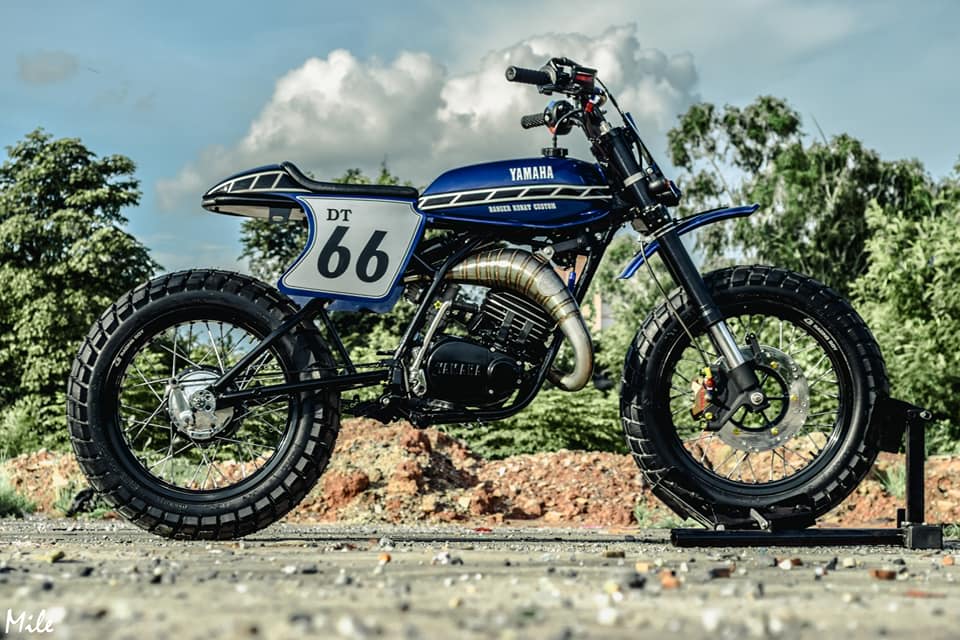
Small two strokes have something special. I don’t know if it’s their sound, their smell, the gas response, or a combination of these factors, but the fact is, that they have a strong attraction (on a lot of us!). The two stroke as an engine is becoming rarer every day, so if I stumble upon a cool custom two-stroke, I’ll always have a spot reserved here (just like this beast). This machine right here is built by Ranger Korat from Thailand and is based on a Yamaha DT125.
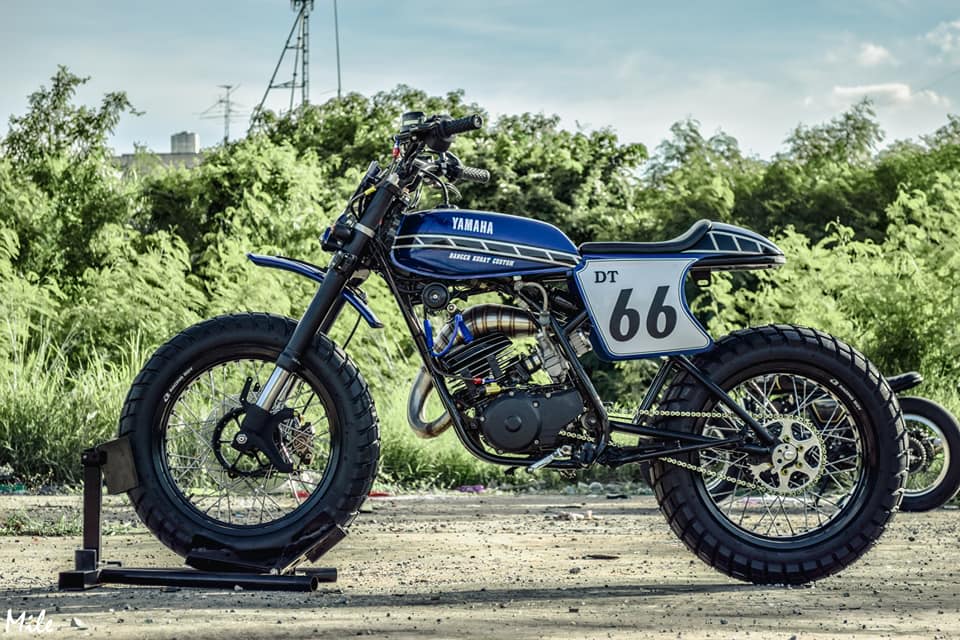

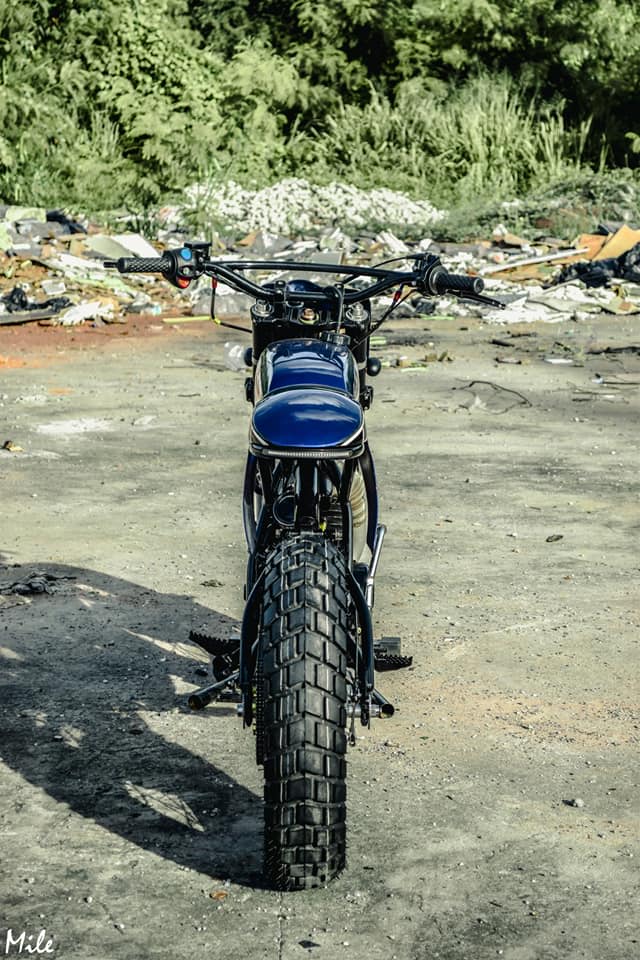
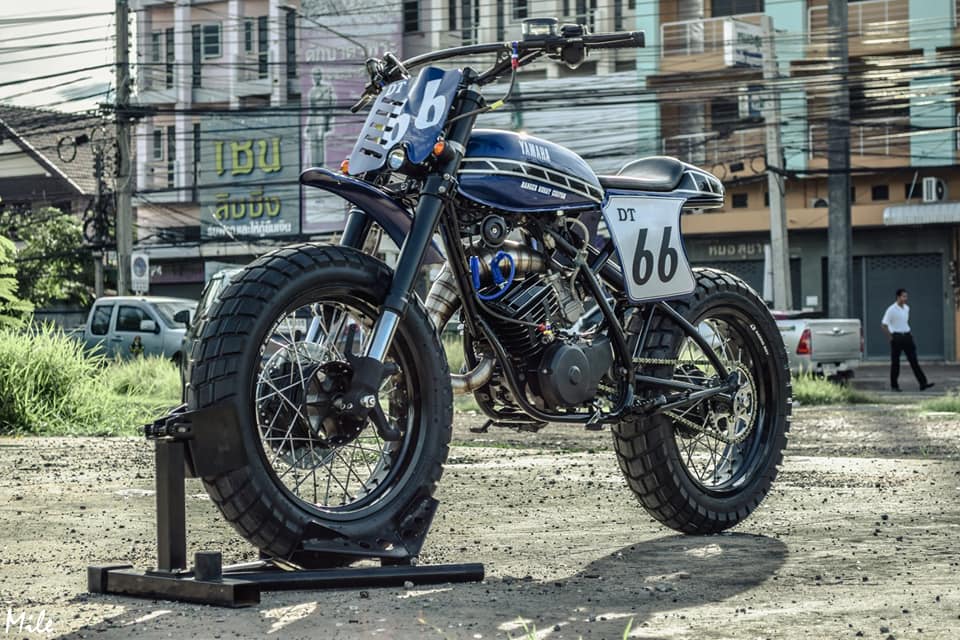
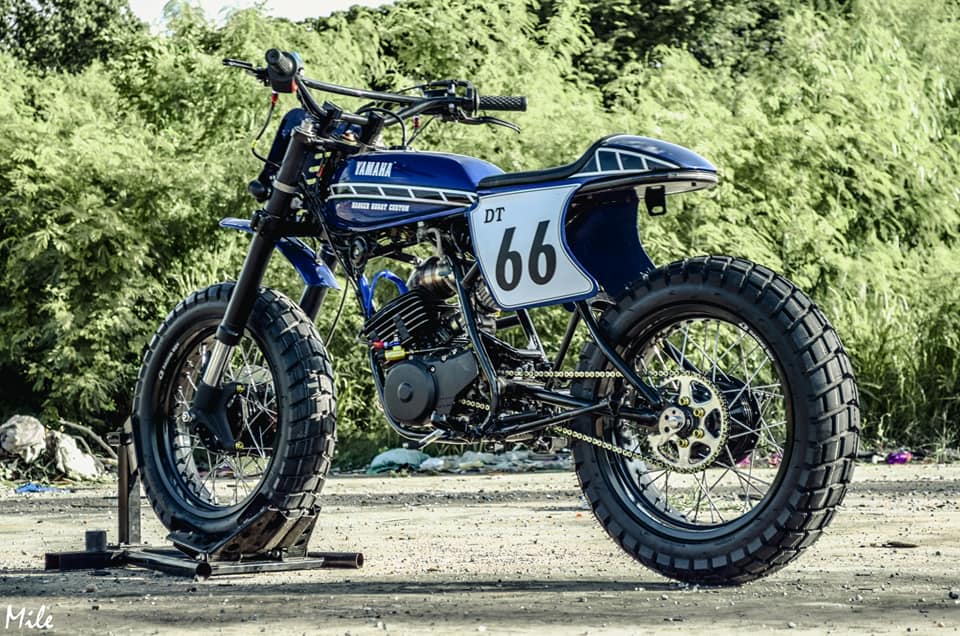
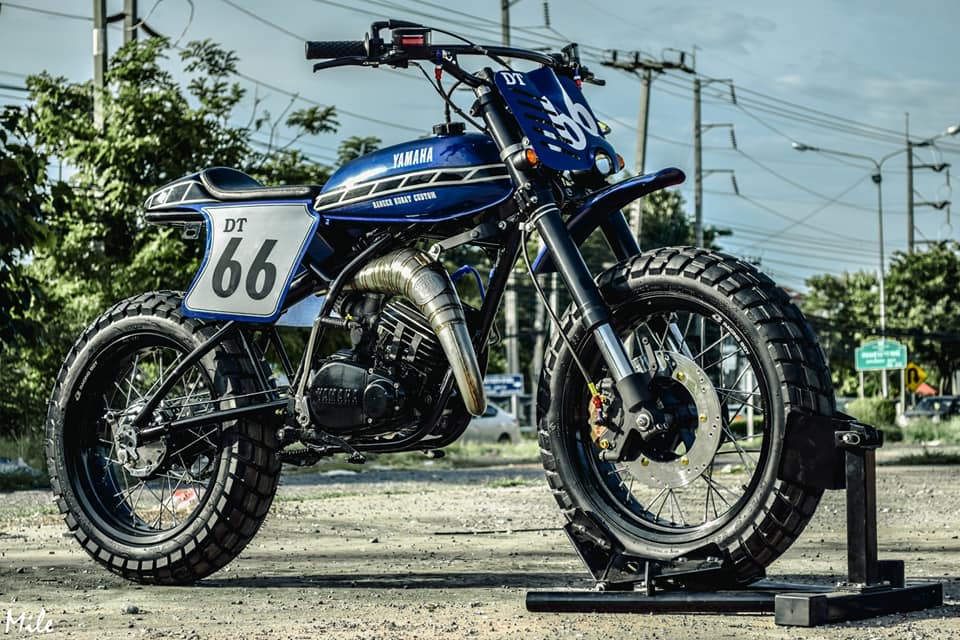

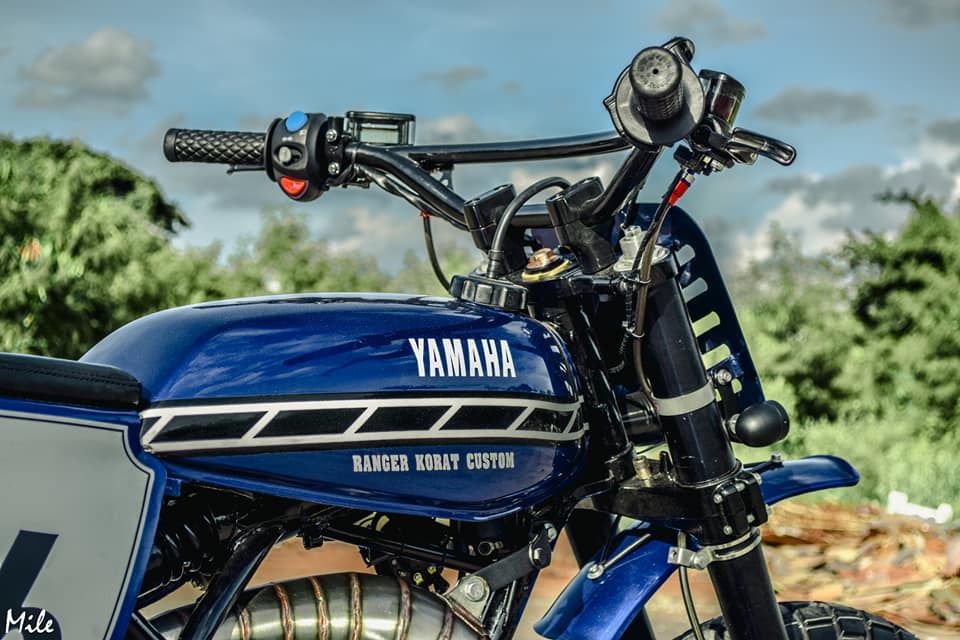
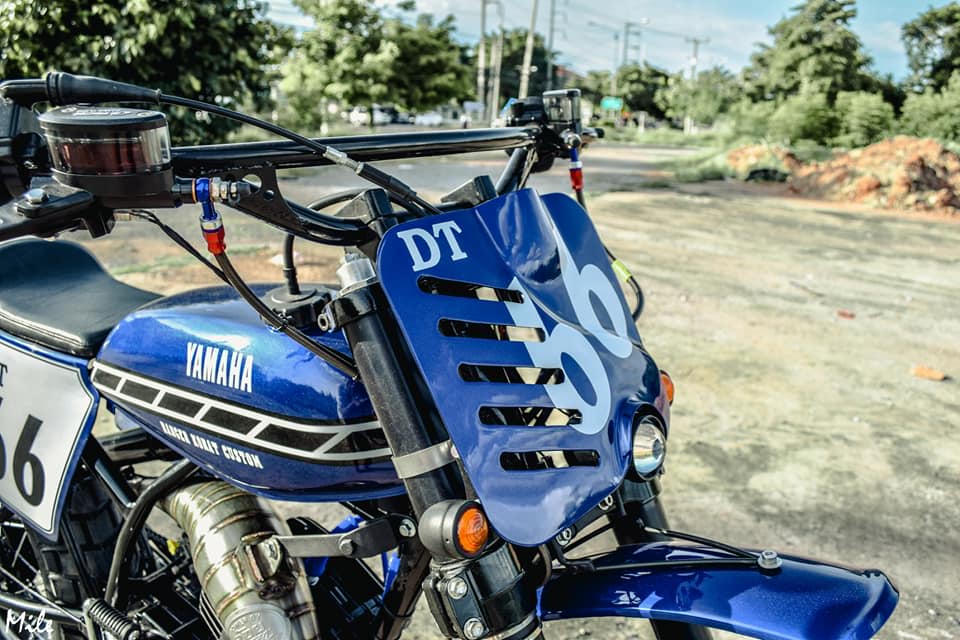
The post Yamaha DT125 Scrambler by Ranger Korat appeared first on BikeBrewers.com.
]]>The post Lambretta 225 by Tomás Costa Lima appeared first on BikeBrewers.com.
]]>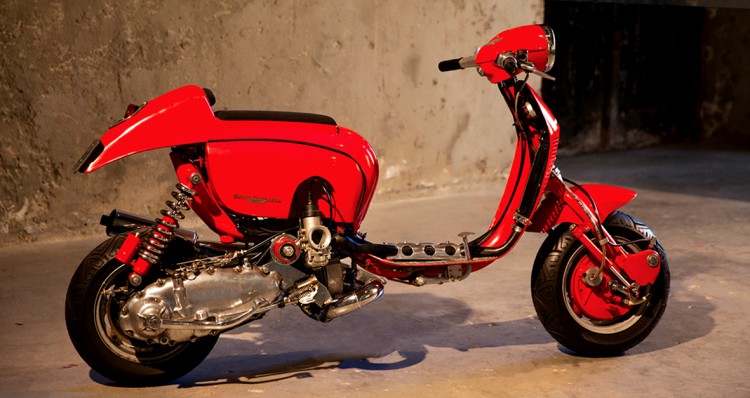
Fast scooters… There was a time here in Holland that everybody had one. Tunes machines with 50 or even 70cc to ride (or better) race the open streets. Since regulations about speeding got a lot tighter, and youngster can get their car drivers license on the age of 17, it seems that the scooter died a quit dead here. So I was glad to see custom bike builders sometimes put their hands on an old Vespa or even better, a Lambretta.
Thinking of Lambretta as having demonic performances is something that only a limited number of enthusiasts can. Imagine joining the knowledge of a 1950s motorcycle champion, a designer from the new millennium, whose features are quite extravagant but at the same time conventional and try to guess the final result. For the spec lovers: this Lambretta has a TS1 performance kit with 225cc (stock is 200cc) and puts out a smashing 37hp. On a 70kg scooter!! The project has a long history and took almost three years to complete. Words by Tomás:
Lambretta has always been linked to the world of scooters, but far away is the year 1947, when Innocenti presented the model A. At the time the aim was only to provide an easy to use means of transportation which only needed basic maintenance. But like everything that has engines and wheels – and is born in Italy – the phenomenon has grown rapidly and the interest for competition has developed in the most diverse forms. Only two years after the introduction of the pioneering model of the Italian house, there was already a huge legion of fans to compete in the competition of the famous Lambretta. This came to be seen throughout the history of the constructor of Milan, first with private pilots, then with the entrance of the factory itself in official competitions, whether in tests of speed in the circuit, records of pure speed or even tests outside of the road.
Portugal did not escape this rule and perhaps one of the most striking names ever associated with Lambretta was Alfredo Baptista Rodrigues. After starting out in motorsport in 1954 on motocross with a 250cc BSA, the rider went on to the races reserved for scooters. These races were quite fashionable in the early 60’s and late 50’s and clubs like Sporting Clube de Portugal, Sport Lisboa e Benfica and even the Club 100 à Hora were just some of the organizers of major motorsports events that attracted huge numbers of fans. Alfredo soon began to look at the commands of a Lambretta 125, having gained evidence as the Tour of Portugal and signed an excellent performance in Lisbon-Porto-Lisbon, and these last races were already disputed when he was official pilot of the Lambretta. Later, he joined the brand Gilera, since the company Moto Lambretta Portuguesa, Lda was representative of the two brands. But the heart of Alfredo continued to be connected to the brand created by Inocentti and many years later, he was one of the great responsible for the creation of the Lambretta Clube de Portugal. That’s where he meets Tomás Da Costa Lima, a brand enthusiast who dreamed of building a Lambretta “unlike any other around.”
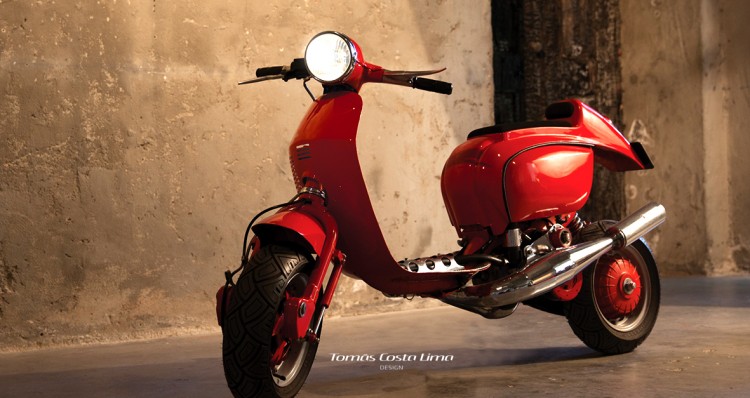
Tomás began to pressure Alfredo a few years before 1999. He went several times to Belém, where Alfredo had his boat business and his motorcycles of choice, to try to persuade him to move forward with the project. It should be noted that the project at this time was the same project, on paper and everything, and perhaps it was the enthusiasm of Tomás and his model of the future Lambretta that awakened the keen mind of Alfredo, who after a short time later decided to get to work. The tasks for the development of the bold project were thus launched: Tomás was in charge of the aesthetic part, while Alfredo was responsible for the technical part of the most daring Lambretta in Portugal. To that end, they commissioned various material from England, a country where the cult of scooters and transformations was at a fairly high level.
After the project had taken its first step and the material ordered had arrived in Lisbon, it was time to start “getting to work”. For this, three Lambretta’s built between the years of 1963 and 67 were necessary. The chassis chosen for the prototype was that of a Lambretta 150 DL, while from Li, the headlight was removed, as well as the handlebar and the side covers, and this last item served also to make the fuel tank caps. The front fork came from the more modern SX200 and the front fender came from a Luna which also helps to cool the radiator. As for the engine used, the base was a block of a Lambretta made in Spain. These machines were given the designation of Servetta and the chosen was one of the propellant units manufactured with 200cc of capacity. All other material was purposefully made for the prototype.
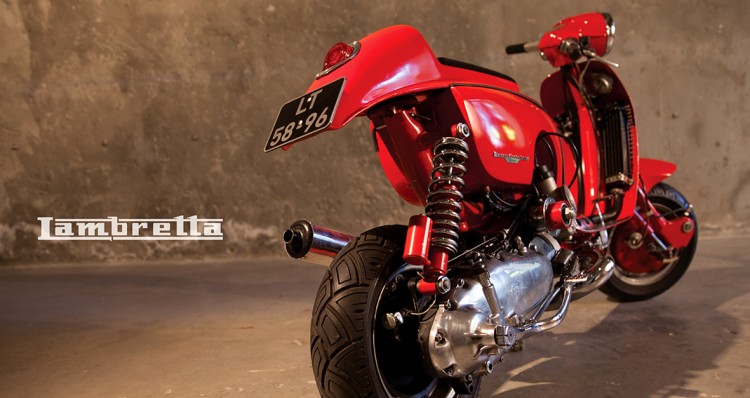
The handlebar was shortened and received a hydraulic front brake pump. It should be noted that the two steering dampers came from a Suzuki. As for the mudguards, this one was created from scratch. The frame is built from aluminum, while in the rear of this Lambretta was created from fiberglass and can be removed to access the fuel tank and engine. In order to get the rear suspension the way they were looking for, Alfredo was confronted with some setbacks. He had to manufacture three types of springs until they hit the one that is currently mounted on this machine. It’s made in Portugal by APV.
Another important item was the exhaust, an important component on this machine since it could help improve the performance significantly. In a first phase, it was installed on the right side of the engine, but it was no ideal position since it was on the same side as the kick starter. So they’ve changed the entire system in order to place the exhaust on the left side. They’ve also explored the possibility to mount a disc brake, but this was abandoned since it gave too much complexity to the machine and it would mess up the aesthetics of the bike.
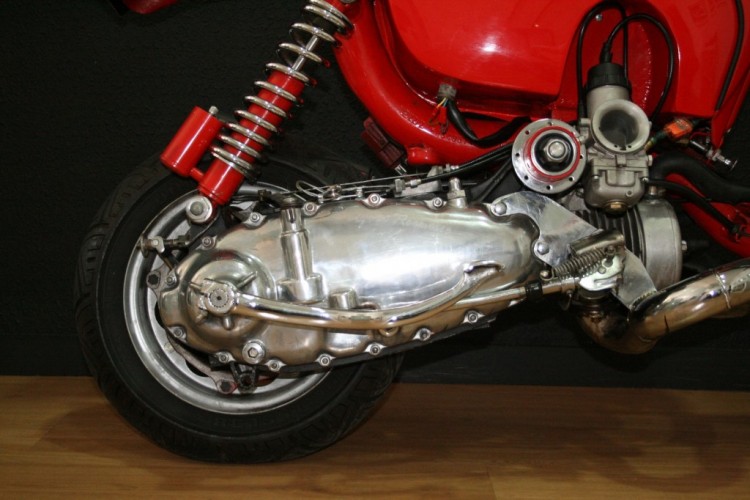
Meanwhile, Alfredo passed away and Tomás found himself ready to finish the ambitious project. After a photo shoot in the studio, he decided that it was time to explore the potentialities of his machine. By the irony of fate, the Vespa Clube de Lisboa took a party to take two rounds to the Autodromo do Estoril, integrated into the races of the National Classic Motorcycle Trophy. The occasion could not be better and after having taken the Lambretta from a third floor without an elevator, it is finally time to put it in operation on a stage of excellence. With the feeling of a kid who would finally test his toy. After fitting the fuel tank properly, and after a few kicks on the kick pedal, the engine with 37 bhp gave a signal of itself, attracting the attention of all those who were at the race track. We even went so far as to say that the Lambretta captivated more attention than the Yamaha TZ there.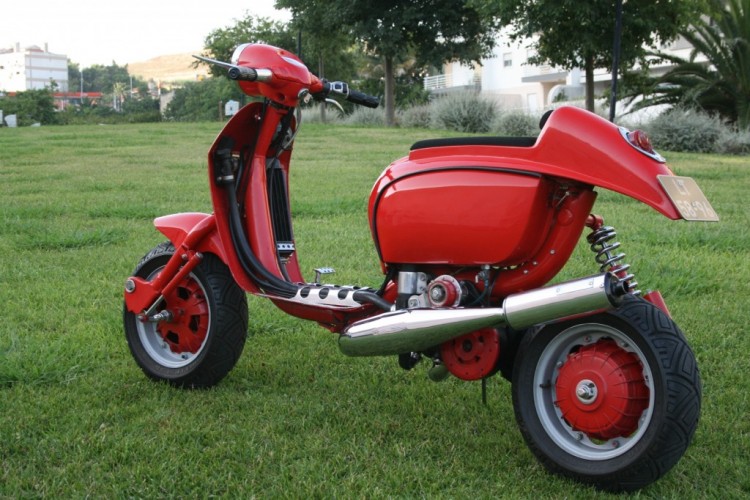
At the end of the day, Tomás revealed the audience with a smile from ear to ear: “It’s amazing! 37 bhp to about 70 kg, which is revealed in a great driving sensation. From 4,000 rpm, the engine does not stop evolving and it does not feel like I’m on top of a scooter. I have been in the 160-170 km/h at the end of the straight but I did not force the progress because as this is an unfinished work, could easily ruin everything in case of unforeseen events. It’s really amazing this Lambretta and I bet Alfredo would like to be here to try out his machine”.
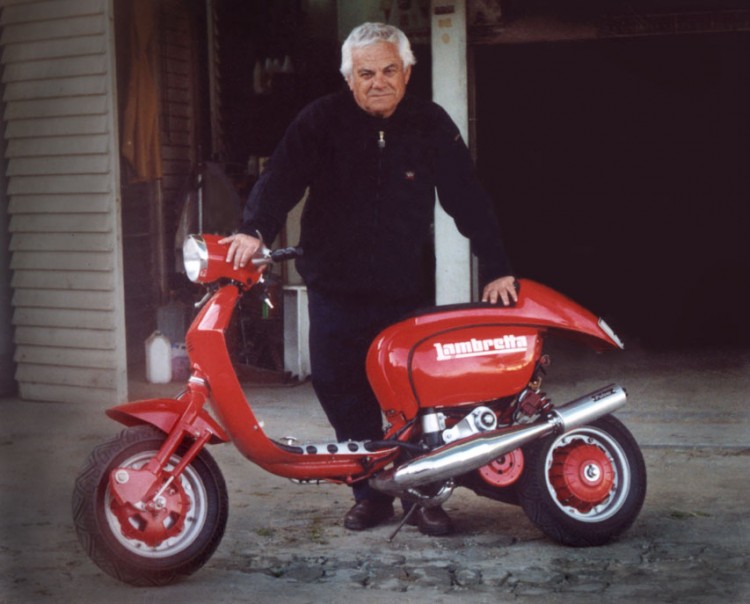
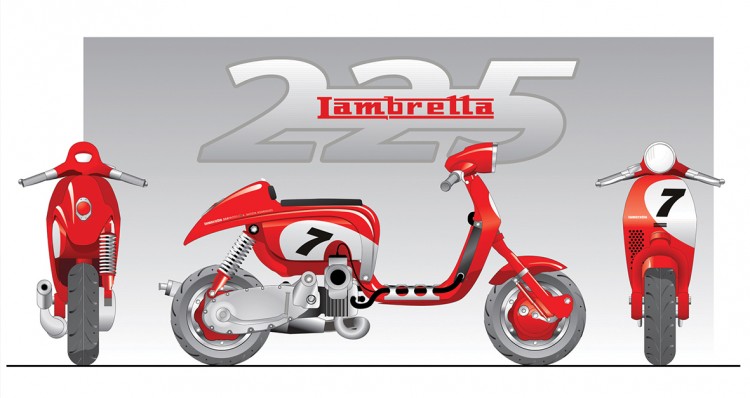
The post Lambretta 225 by Tomás Costa Lima appeared first on BikeBrewers.com.
]]>The post Bikes of the Month – March appeared first on BikeBrewers.com.
]]>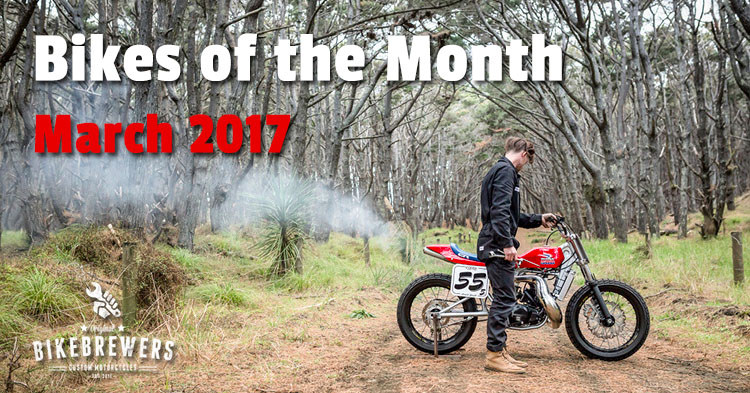
While some may have a 12 month motorcycle season, here in Holland we’re glad if we can ride 6 or 7 months a year. Of course, there are some hardcore purists who ride all year, but unless you have a Husqvarna with ski’s, I wouldn’t recommend it. But the spring kicked in a bit early and a lot of riders have removed the dust of their bikes with the first happy miles. But let’s take a look back a what March 2017 offered us.
Moto Guzzi Griso Tracker
![]()
One of the finalists in Moto Guzzi’s custom motorcycle battle “Lord of the Bikes”, based on a Moto Guzzi Griso. A real flat tracker that actually is build for racing and not only build for show and shine. And if you take a look at the rather bulky, but powerful Griso, you know that this was not an easy task. The bike lost over 50kg of weight to a respectable 170kg. With 110 horses on the rear wheel and no front brake…[read more]
BMW R65 Scrambler by Ironwood
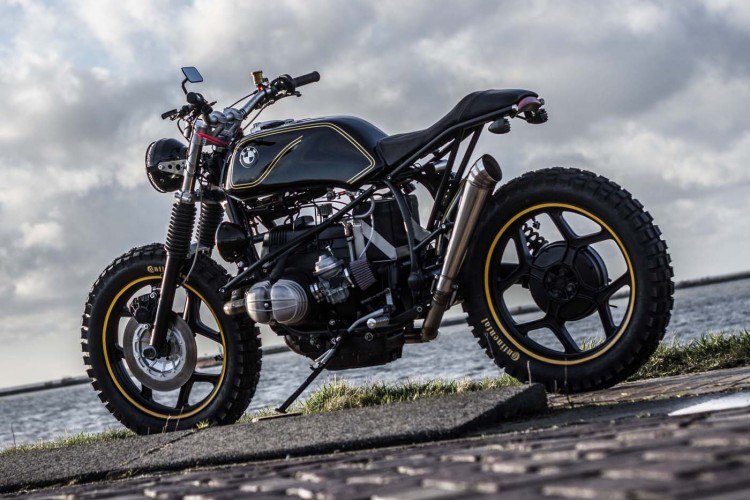
Incredible cool and radical looking BMW R65 Scrambler built by our close friends of Ironwood Custom Motorcycles. With this build they show what they are capable of and it went completely viral on Facebook and Instagram. With this machine, they even got a honorable mention on BikeEXIF. [read more]
Honda CR500 Tracker
![]()
“Not for kids or pussies”, that’s what a seller of his Honda CR500 once stated in his Craigslist ad. It’s clear that the 53hp of the single cylinder 2-stroke powerhouse is not made for everybody. Adam Hedges of C’s Garage and the Earnest company has built race cars the past 10 years but always had a strong love for 2-stroke motorcycles, with Honda’s CR500 as the ultimate bike. So he decided to build his own flat tracker based on this monster. [read more]
Moto Guzzi 950 by Stile Itialino
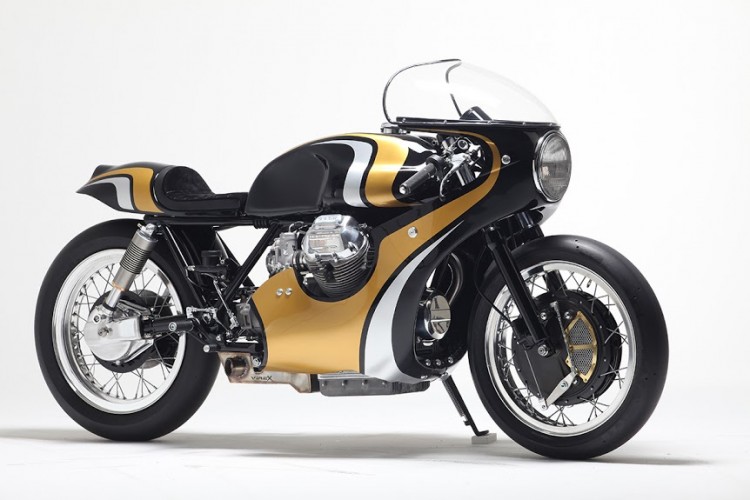
As a Guzzi rider I may have a slight preference for custom bikes based on the Italian brand. And if you know a little about the brand, you may know that the 850cc T3 is a beloved machine, especially in its original state. But that was no reason for the guys from Stile Itialiano to customize it. Inspired by the legendary Honda CR750 racer, their “CR950” hits a sweet spot. [read more]
Yamaha XS650 Tracker by H-Garage
![]()
Cool Yamaha XS650 Tracker built by H-Garage. A project that went from “I only need to freshen the bike up”, to “a complete custom motorcycle project”. According to Scott Halbleib, owner of H-Garage, there is no such thing as a budget build and he convinced the owner of the XS to go for a full build-out of this machine. Finished with the recognizable Gulf color scheme that actually worked out pretty well for this bike. [read more]
And this awesome Suzuki SV65o Scrambler…
The post Bikes of the Month – March appeared first on BikeBrewers.com.
]]>The post Husqvarna 256 “THAGE” by 6/5/4 Motors appeared first on BikeBrewers.com.
]]>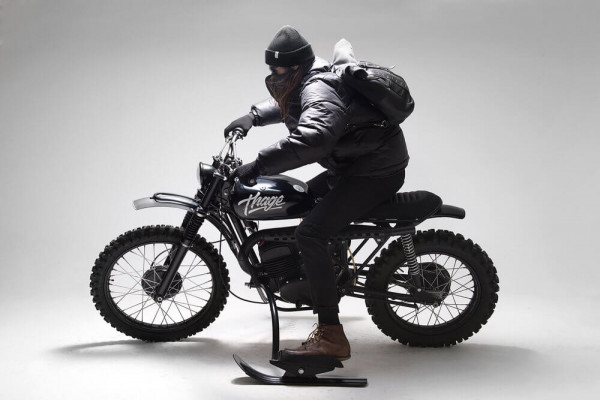 Snow and motorcycles are not a great combination but with the right material you can have a lot of fun in the snow on 2 wheels. Last week LOON proved that with their ice cool Husqvarna 501 Tracker. And if you live in an area where you can expect several months of snow, you have to be a bit creative if you want to ride your bike in winters too. Johan & Johan from 6/5/4/ Motors in Stockholm ditched up an old concept from Husqvarna. Back in 1968 the Swedish defense bought 1000 Husqvarna 256 (or MC256) motorcycles with an option to add ski’s.
Snow and motorcycles are not a great combination but with the right material you can have a lot of fun in the snow on 2 wheels. Last week LOON proved that with their ice cool Husqvarna 501 Tracker. And if you live in an area where you can expect several months of snow, you have to be a bit creative if you want to ride your bike in winters too. Johan & Johan from 6/5/4/ Motors in Stockholm ditched up an old concept from Husqvarna. Back in 1968 the Swedish defense bought 1000 Husqvarna 256 (or MC256) motorcycles with an option to add ski’s.
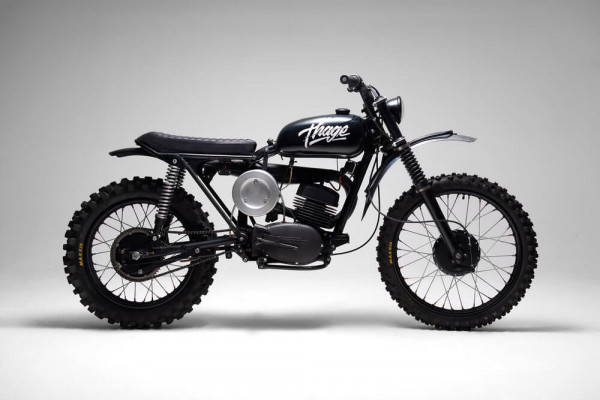
They’ve found this old Husqvarna 256 and decided to restore it to its original concept with a modern tracker flavor. The original Husqvarna 256 was equipped with a 256cc two-stroke engine pushing out 15hp combined with a four-speed gearbox. Since the bike could be equipped with ski’s, shifting was integrated in the lever. The ski’s would automatically sprang up if they were not pushed down. Its successor, the MC258 got an automatic gearbox. Unfortunately, the 1000 bikes for the army were the only ones produced, so the bike was pretty expensive to maintain due to the lack of affordable spare parts. From the 258, 3000 machines were manufactured.
Johan & Johan stayed pretty close the the original concept, but gave it their own twist.
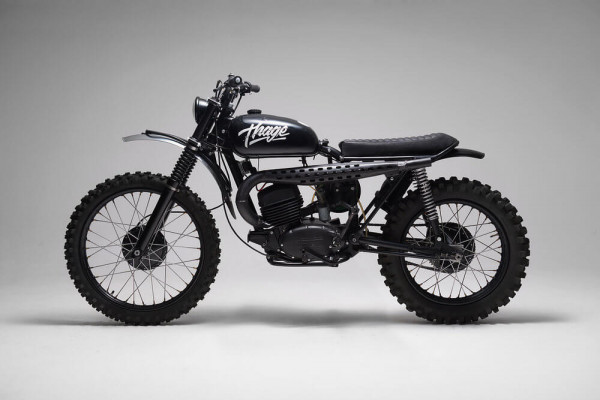
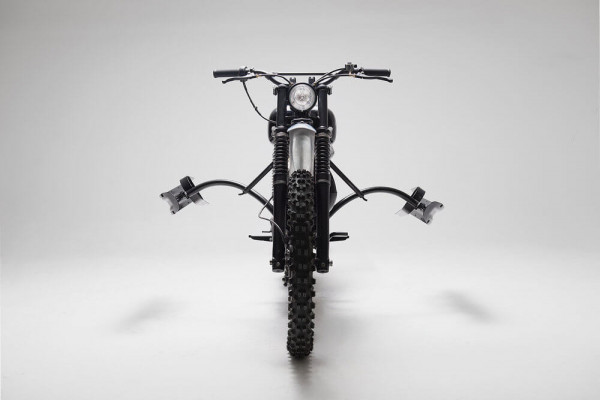
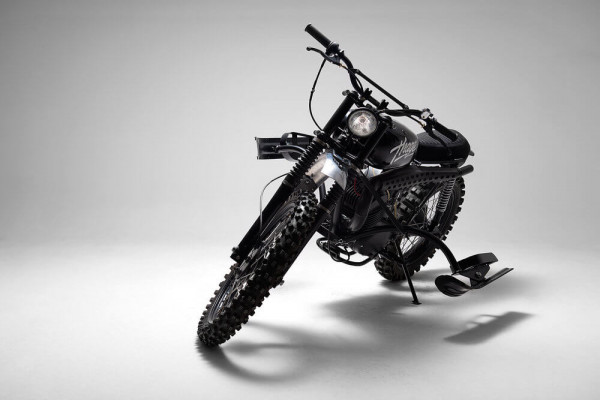
The original Husqvarna 256:
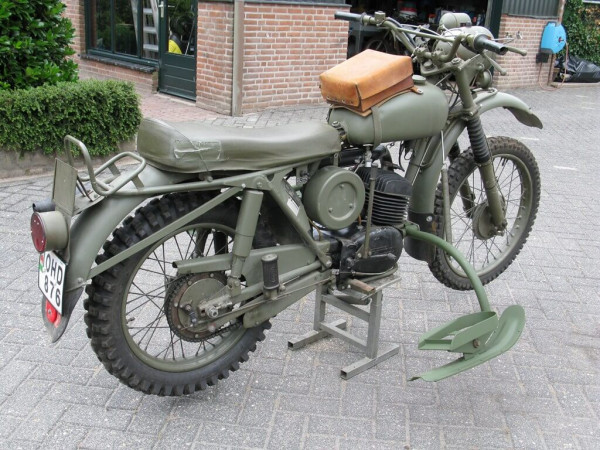
Husqvarna 256 Gallery
[su_custom_gallery source=”media: 5070,5067,5066,5065,5064,5063,5062,5061″ link=”lightbox” title=”never”]The post Husqvarna 256 “THAGE” by 6/5/4 Motors appeared first on BikeBrewers.com.
]]>The post Top 10 Customs of 2016 appeared first on BikeBrewers.com.
]]>2016 was an awesome ride! The custom motorcycle scene is more alive than ever and BikeBrewers.com is very successful in becoming a well-known place to find inspiration for custom bikes. Just like 2015, I want to look back at last year with a top 10 overview of the best custom motorcycles we saw. I didn’t focussed on BikeBrewers.com only, just like in the Bikes of the Month section I’ve looked around the entire web and base the ranking upon likes, responses, buzz etc. But different than last year, I picked 30 motorcycles that I personally loved and let you guys vote for a top 10. So no hard data or statistics, simply a subjective view where the ones with the most “voting power” wins. The result is the top 10 below:
#10: BMW R100 by NCT Motorcycles
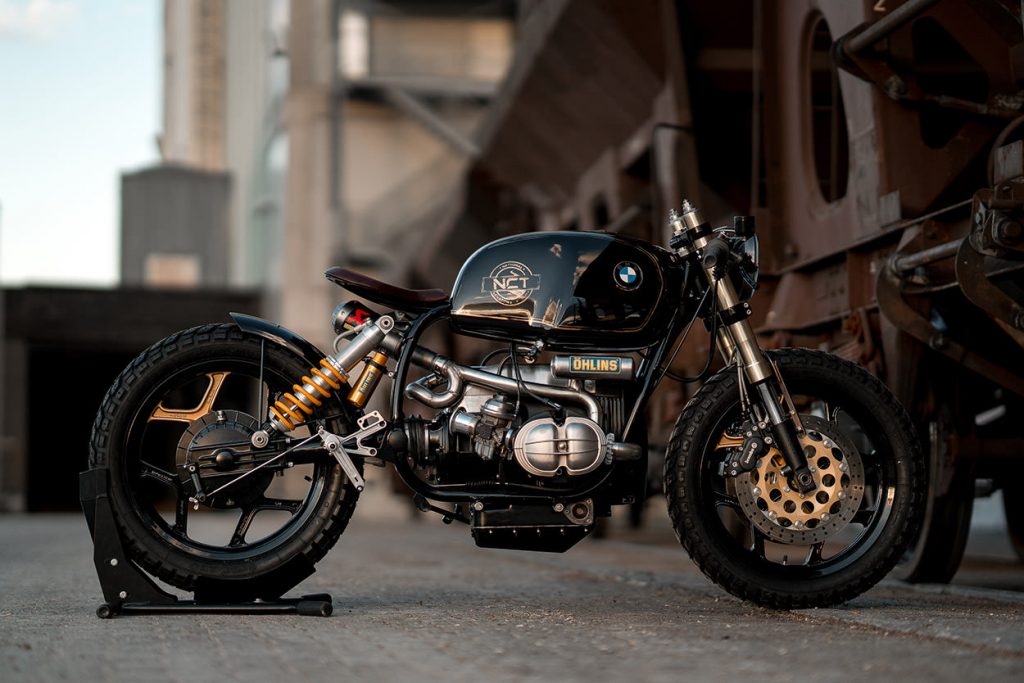
A radical looking BMW R100 built by NCT Motorcycle from Germany called “Black Stallion” stuffed with high-end parts and materials like Öhlins suspension, hand crafted exhaust systemem, Akrapovic muffler, MotoGadget M-unit wiring etc. This won’t be the best bike for your daily miles, but it sure will draw attention when riding it. This machine made it to #10 with 723 votes. [read more]
#9: Honda CB550 by NCT Motorcycles
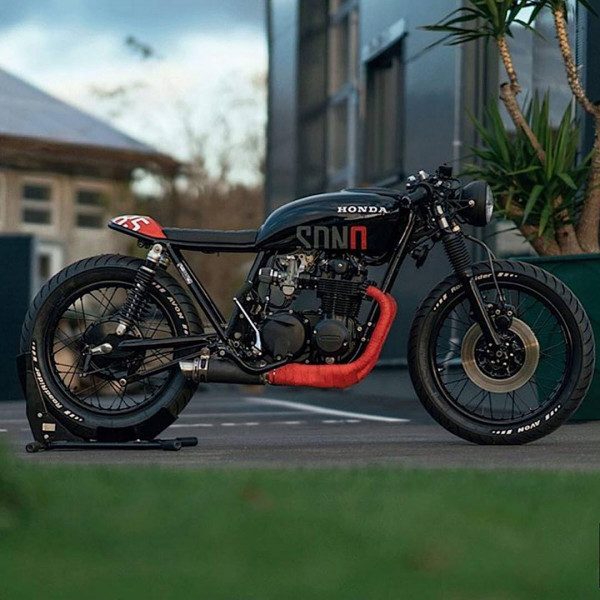
Two machines of one builder in the top 10? Yes, I know that this looks arguably. But I did mention that this list is a bit subjective? This is another cool creation of NCT Motorcycles and based on the beloved Honda CB550. It’s one of those machines that has something special, but it’s not really one thing that you can point. Maybe it’s the simple and classic “cafe racer look”, or maybe it’s just because of the red details. Anyway, you guys liked it: 807 votes [read more]
#8: Moto Guzzi “MGR 1200” by Radical Guzzi
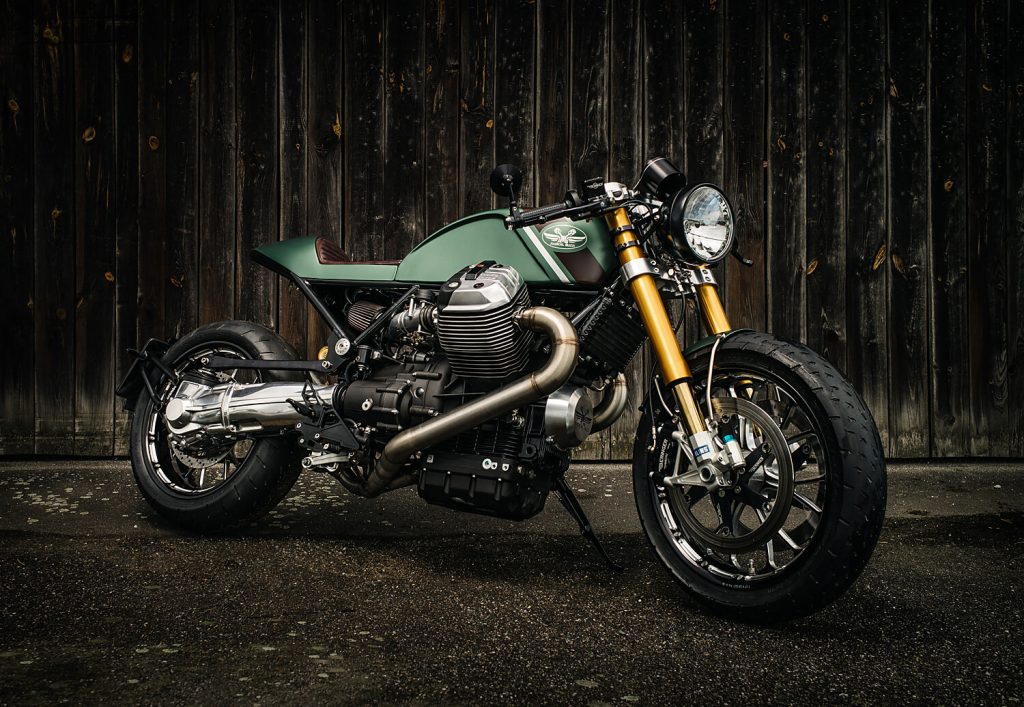
As a Guzzi rider, this one was my personal favorite. Not really retro, but also no supersport. It’s a class of its own. The so-called “MGR 1200” by Radical Guzzi shows a perfect mix between the legendary Moto Guzzi heritage and modern technology. 1009 votes for the MGR1200. [read more]
#7: Yamaha RD350 Cafe Racer by Iron Custom Motorcycles
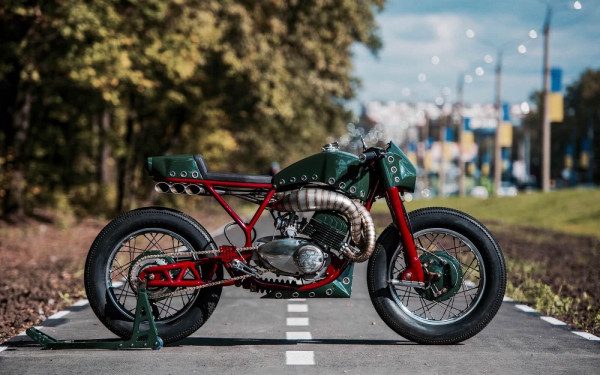
An extraordinary piece of engineering from Ukrain with almost nothing original or stock on it. Based on a Yamaha RD350 but transferred into a 555cc triple cylinder machine. A little machine with some serious power and brutal 2 stroke sound. Finished on #7 with 1476 votes. [read more]
#6: Benelli BN600 Streetfighter by Kenstomoto
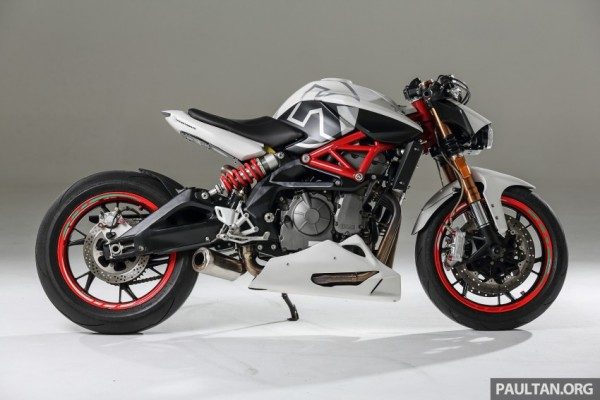
An awesome creation from Malaysia; a brutal looking Benelli BN600 Streetfighter built by Kenny Yeoh from Kenstomoto. A BN600 as a base bike, some funds of a client and a carte blanche started all this. It’s called “The Demolisher” and finished #6 with 1604 [read more]
#5: Ducati 350 Pantah by Capêlos Garage
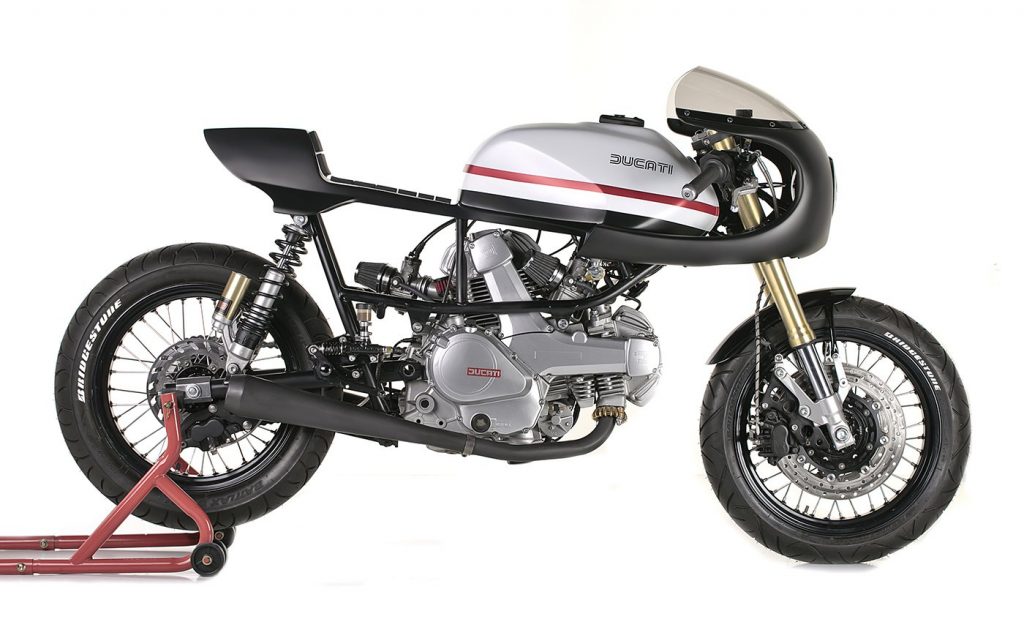
If you ask a child to draw a cafe racer, it probably looks like this bike by Capêlos Garage. Beautiful stance and lines and of course that half fairing is topping of the aesthetics of this bike. It’s A Ducati in the mix with a Cagiva resulted in this “350 Pantah”. The bike drew a lot of attention during the 2016 Bike Shed London and melted down social media. This small machine got 1921 votes; good enough for #5. [read more]
#4: Buell XB9 Cafe Racer by Iron Pirate Garage
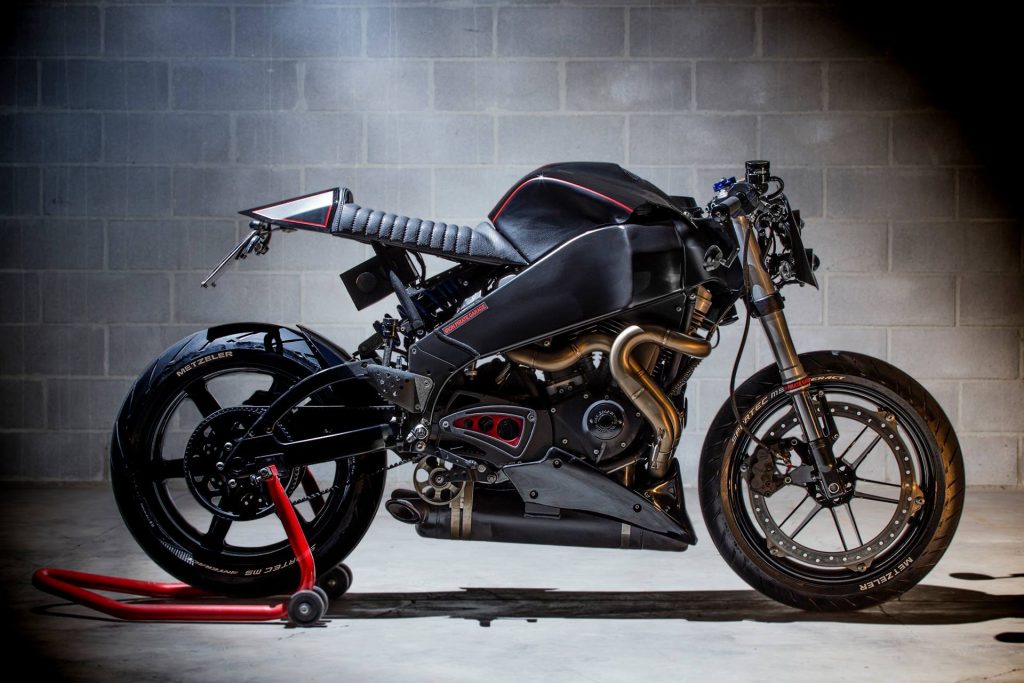
On of the most eye-catching machines I’ve featured here with a lot of likes on social media. Even our friends of BikeEXIF picked up this machine and gave it a place in their “Bikes of the Week” section. It got 2001 votes, good to be listed #4 in this overview. [read more]
#3: Suzuki GS550 Boardtracker by Wimoto
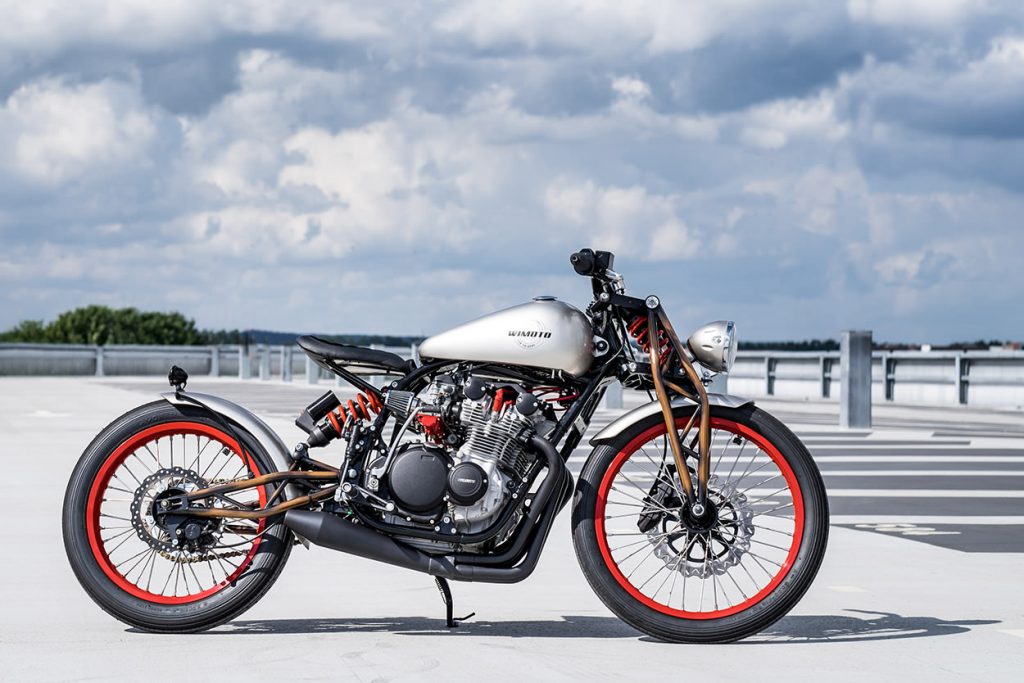
A wicked machine from Holland, built by Wido Veldkamp of Wimoto. I saw Wido work on this bike and I instantly realized that this was something special. And you guys also liked it. Wido’s Suzuki GS550 ended #3 with 2568 votes. [read more]
#2: BMW R100 Twin Turbo by Boxer Metal
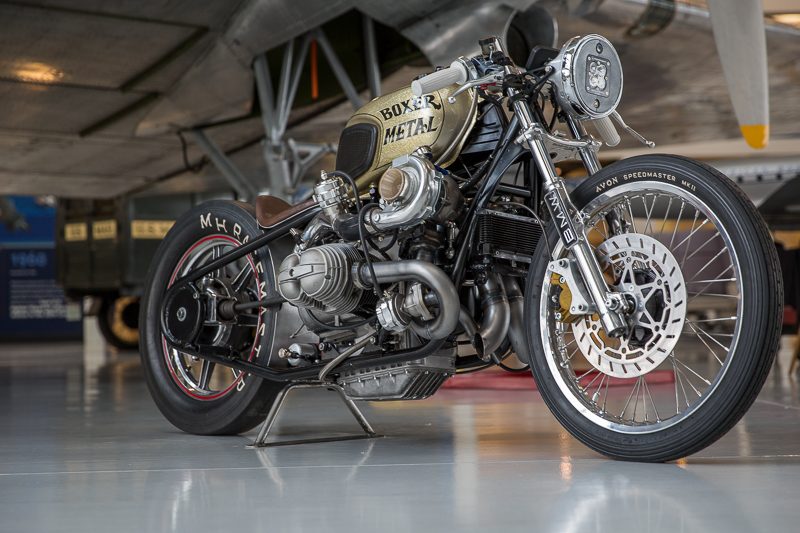
Built in just 7 weeks for the One Motor Show. That is a challenge, but putting on 2 turbo’s on the machine made things tricky. An extraordinairy design and “hard tailed”. This is a bike that created a lot of buzz both online and offline. A respectable 2nd place for Boxer Metal with 2662 votes. [read more]
#1: BMW K1100 Cafe Racer by De Angelis Elaborazioni
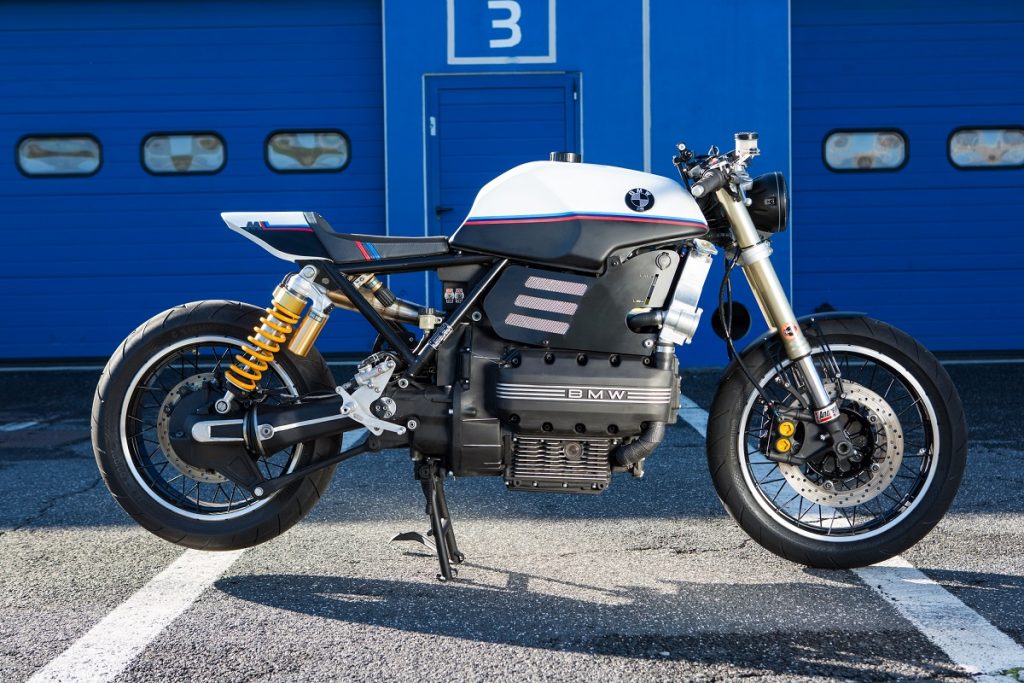
A machine not only built for the looks, but mainly for performance: the awesome BMW K1100 by De Angelis Elaborazioni. They’ve turned the so-called “Flying Brick” into a serious track weapon. De Angelis has a strong fan base which resulted in 3701 votes to rocketeer this machine to the #1 of this top 10. [read more]
#BONUS#: Harley Davidson Café Racer by Zadig Motorcycles
This awesome Harley Davidson Café Racer is circling around the web, but there isn’t much to tell about. The only thing I know is that it’s built by Zadig Motorworks and that it’s called “Balboa” (yes, from that boxing movie). The aesthetics of this machine are outstanding and I thought it was worth noticing as a bonus in this top 10.
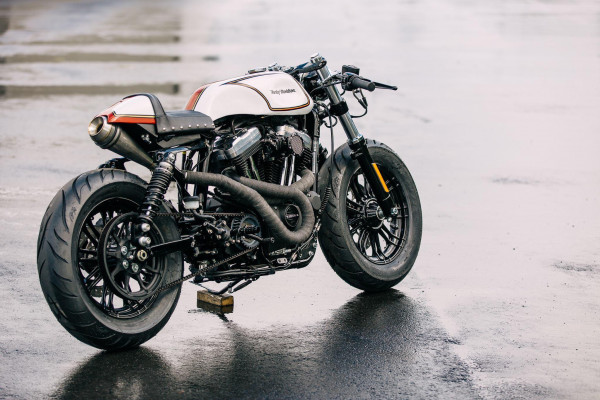
The post Top 10 Customs of 2016 appeared first on BikeBrewers.com.
]]>The post 2 Stroke Rocket from Ukraine appeared first on BikeBrewers.com.
]]>Do yo remember this cool RD135 Café Racer? A real dapper 135cc 2 stroke machine. This little machine produced an impressive 18hp. But what if you take the engine of his bigger brother, the RD350, and redesign the engine to a 555cc triple cylinder? Well, that’s exactly what the guys from Iron Custom Motorcycles (ICM) from Ukraine did. The result? “Project Beckman”: a lightweight, 50hp 2 stroke rocket that runs over 200km/h!
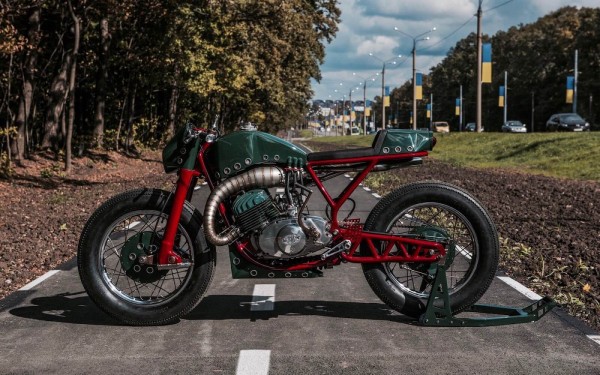 The Beckman projects represents a look back in the early days of Ukrain, when the cafe racer culture was born.
The Beckman projects represents a look back in the early days of Ukrain, when the cafe racer culture was born.
We decided to use in creation of this project only the spare parts of the 60-80th years available at us in the country, self-made accessories and production technologies of details of this period. Wilhelm Beckman is an outstanding athlete and the design engineer, the author of a large number of the books devoted to motorcycle sport and designing of motorcycles. Exactly relying on his books and articles this motorcycle transmitting spirit and an era of that time was constructed.
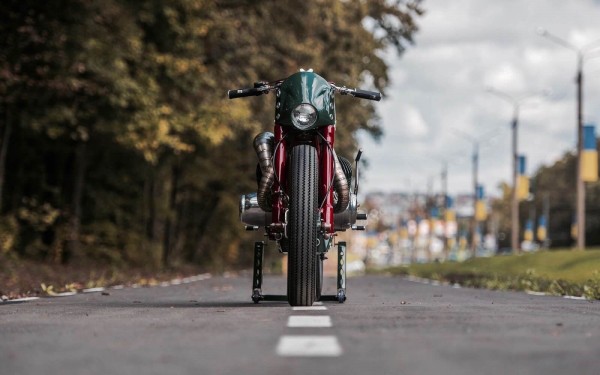
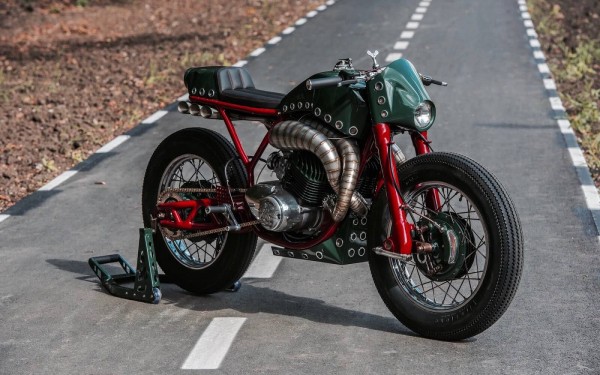
But actually it’s not a Yamaha like you would assume from the intro: this motorcycle is based on a “Izh-Jupiter 4“; a Ukrainian cult machine from the early 80s. But a variety of parts from the Japanese brand where used. Like to read the whole story and the extensive list of mods? Check it out here.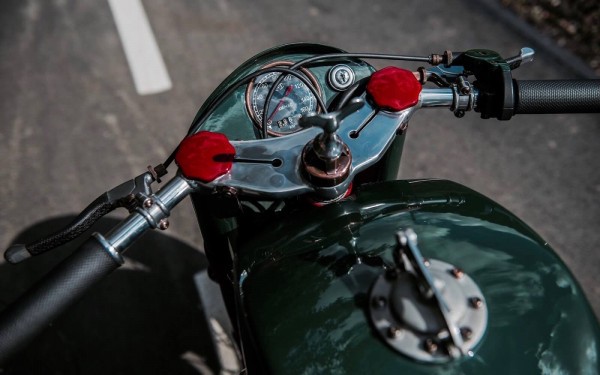
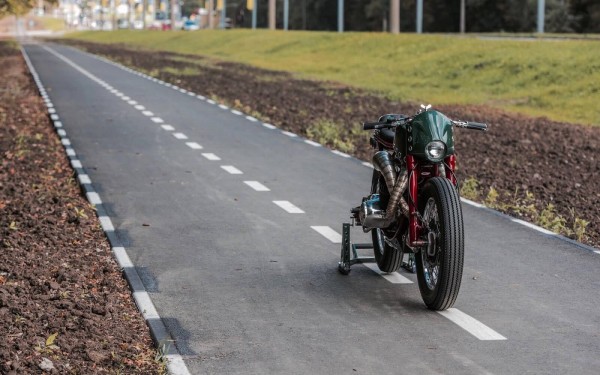
Yamaha RD350 Cafe Racer Gallery
[su_custom_gallery source=”media: 3801,3800,3799,3798,3797,3796,3795,3792,3791,3790,3788″ link=”lightbox” title=”never”]The post 2 Stroke Rocket from Ukraine appeared first on BikeBrewers.com.
]]>